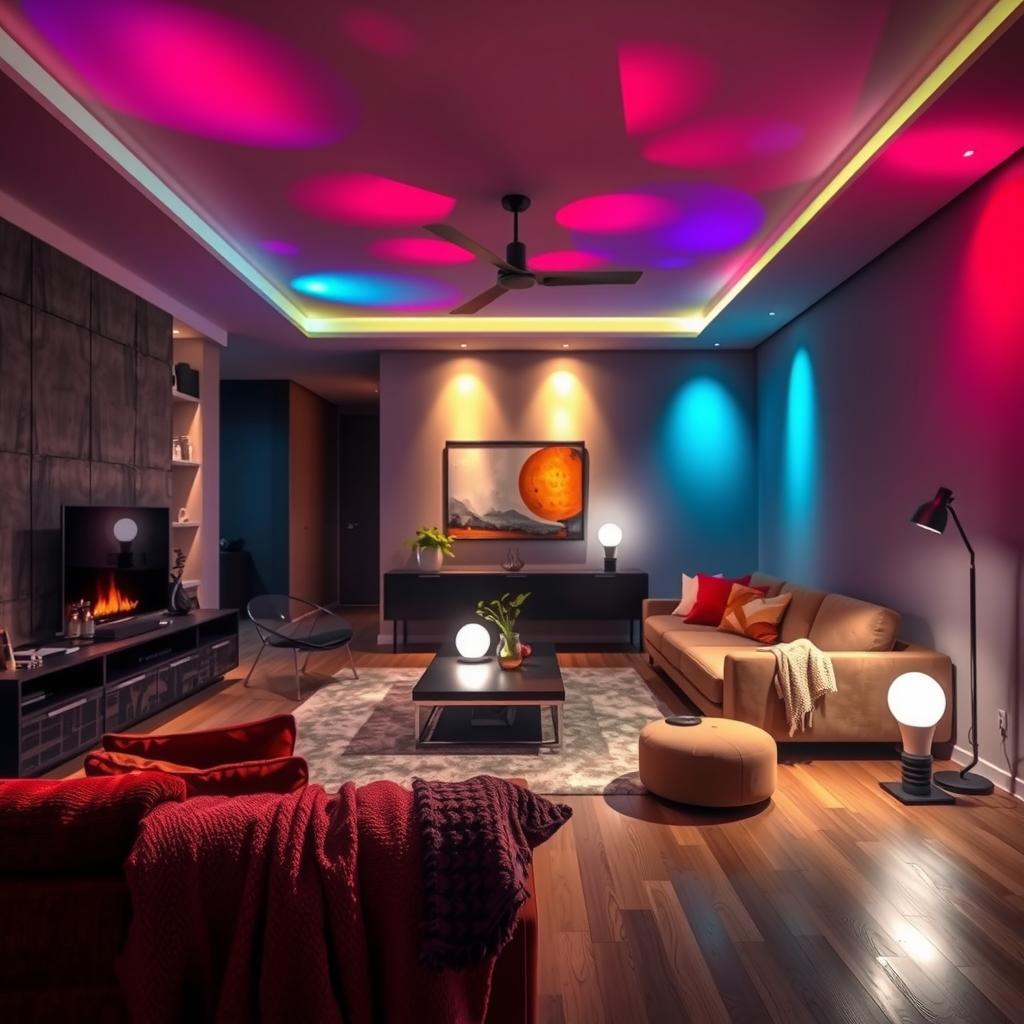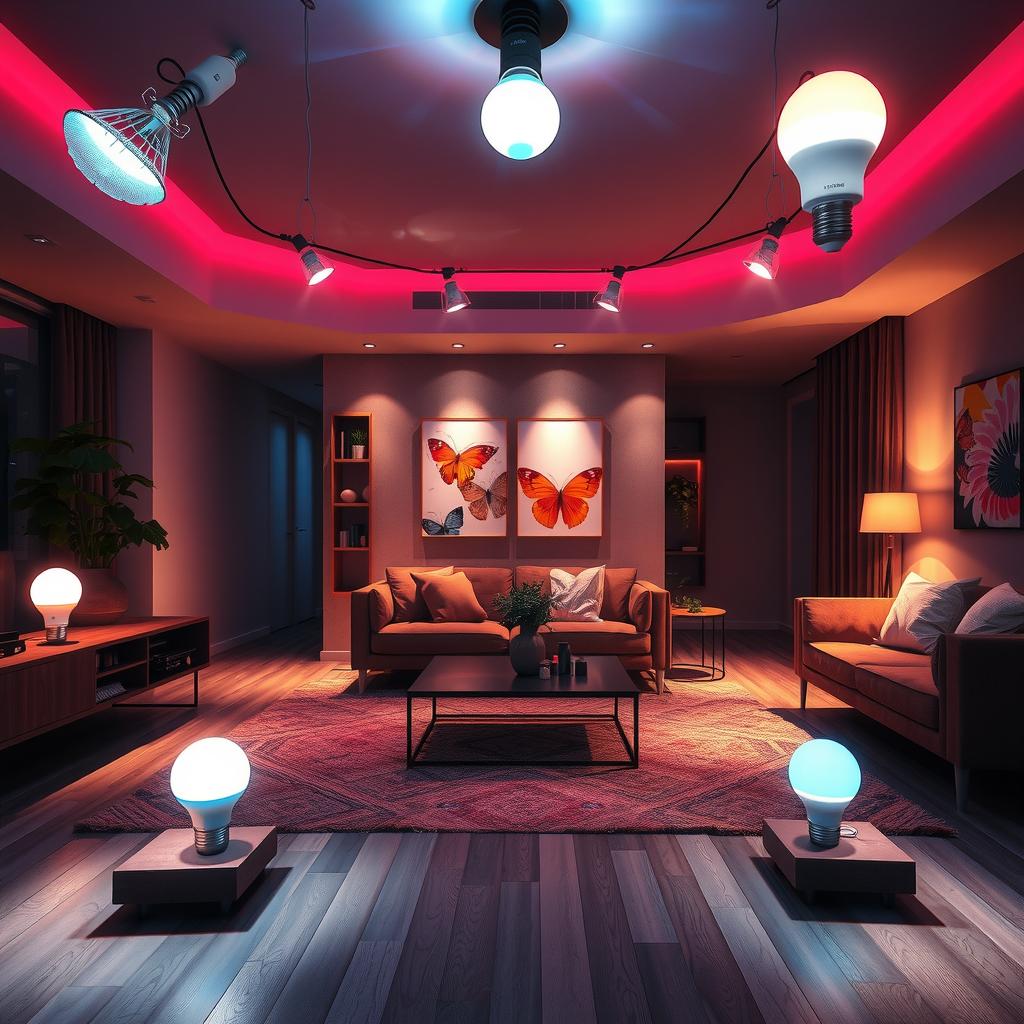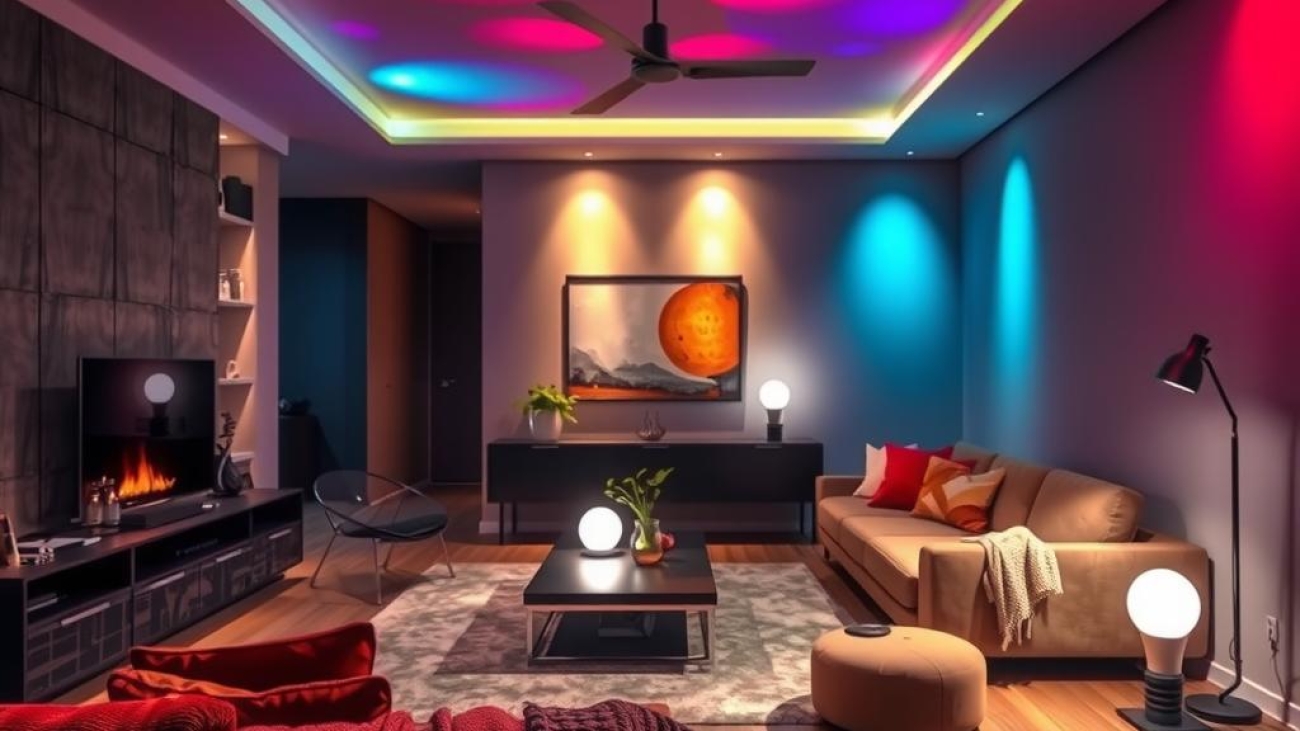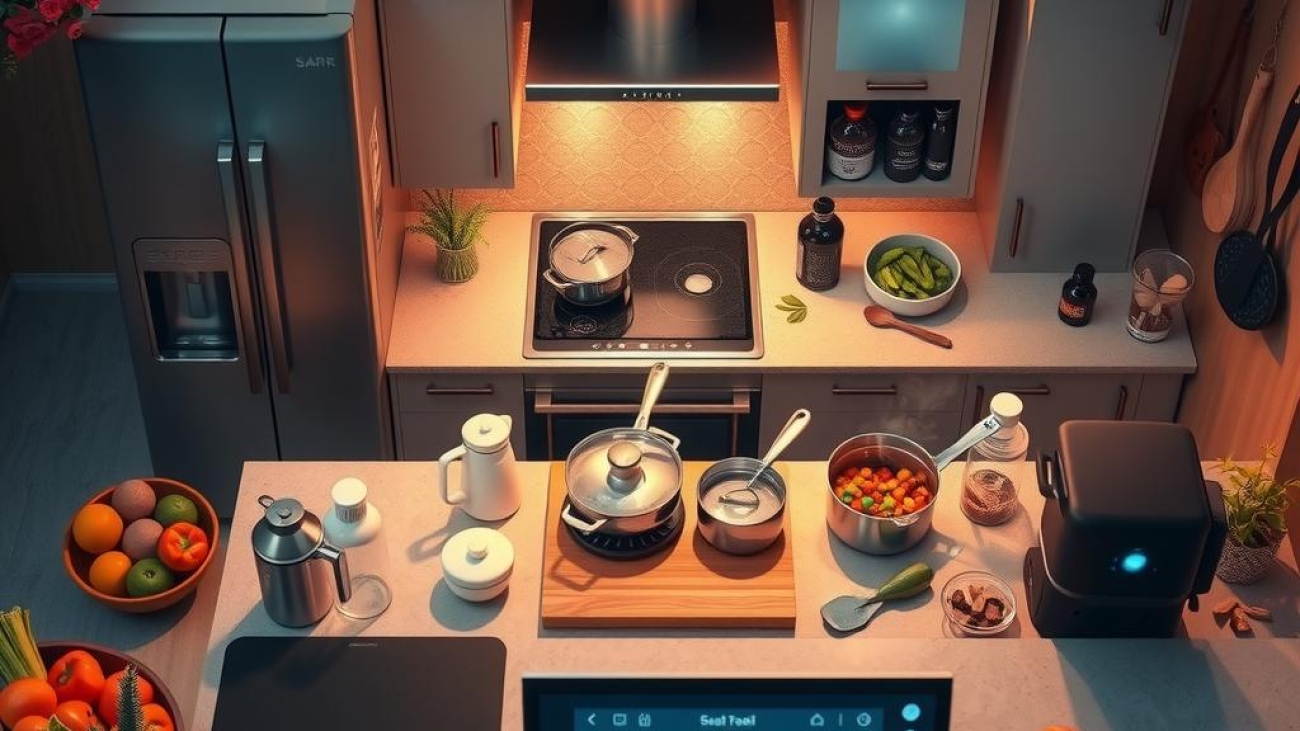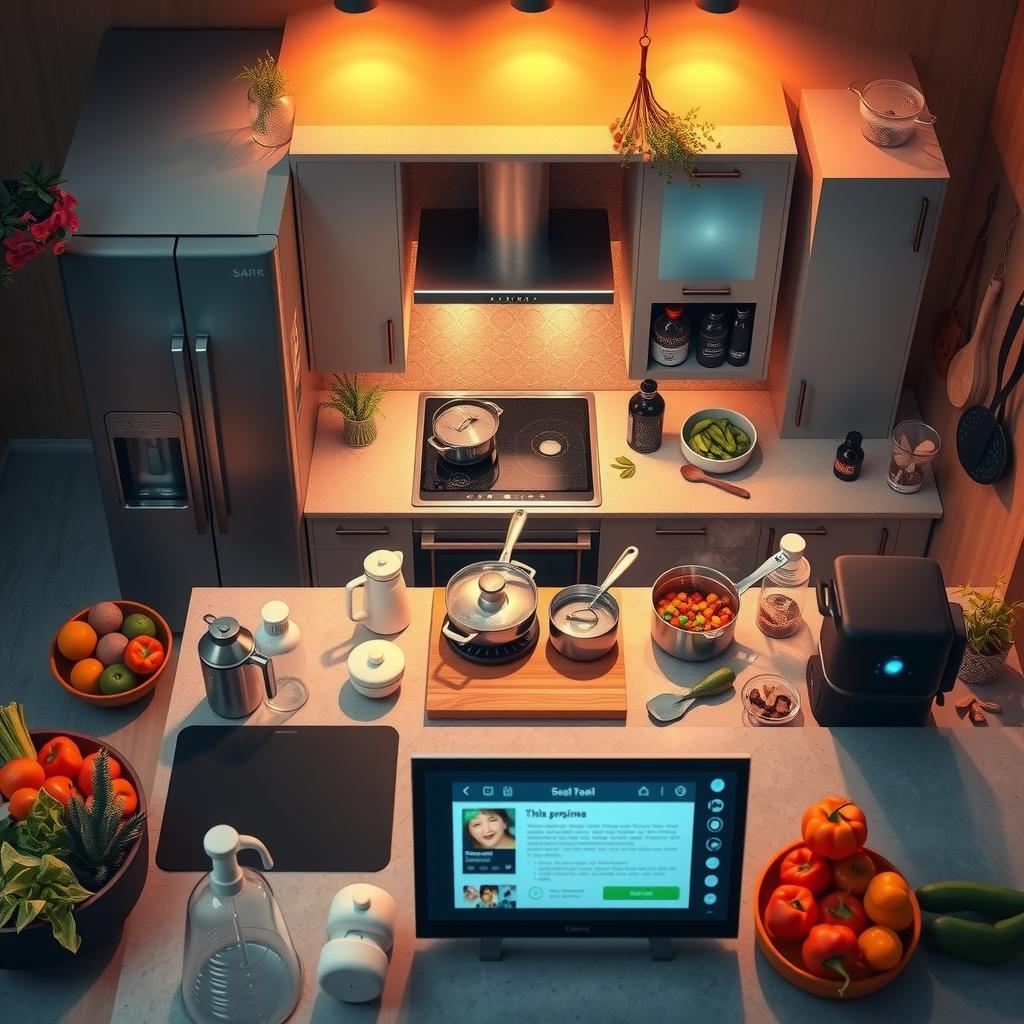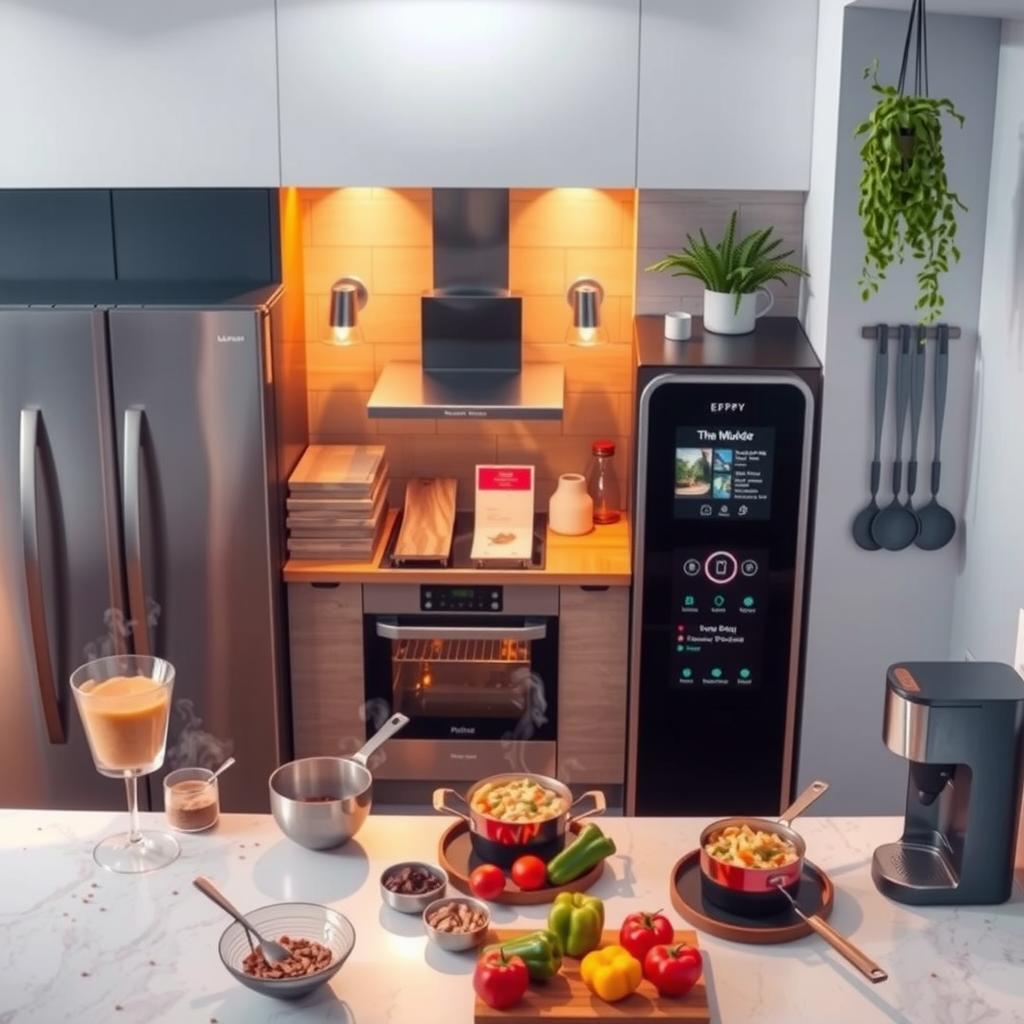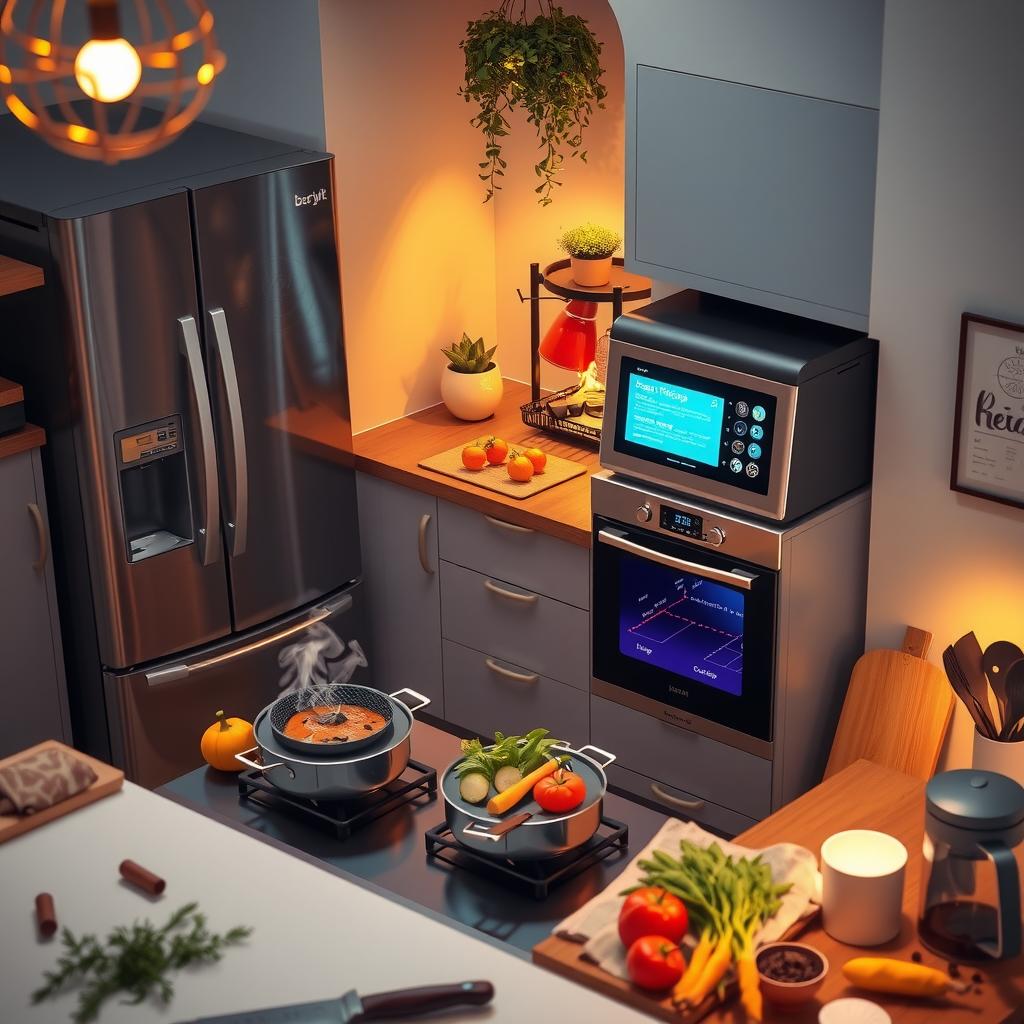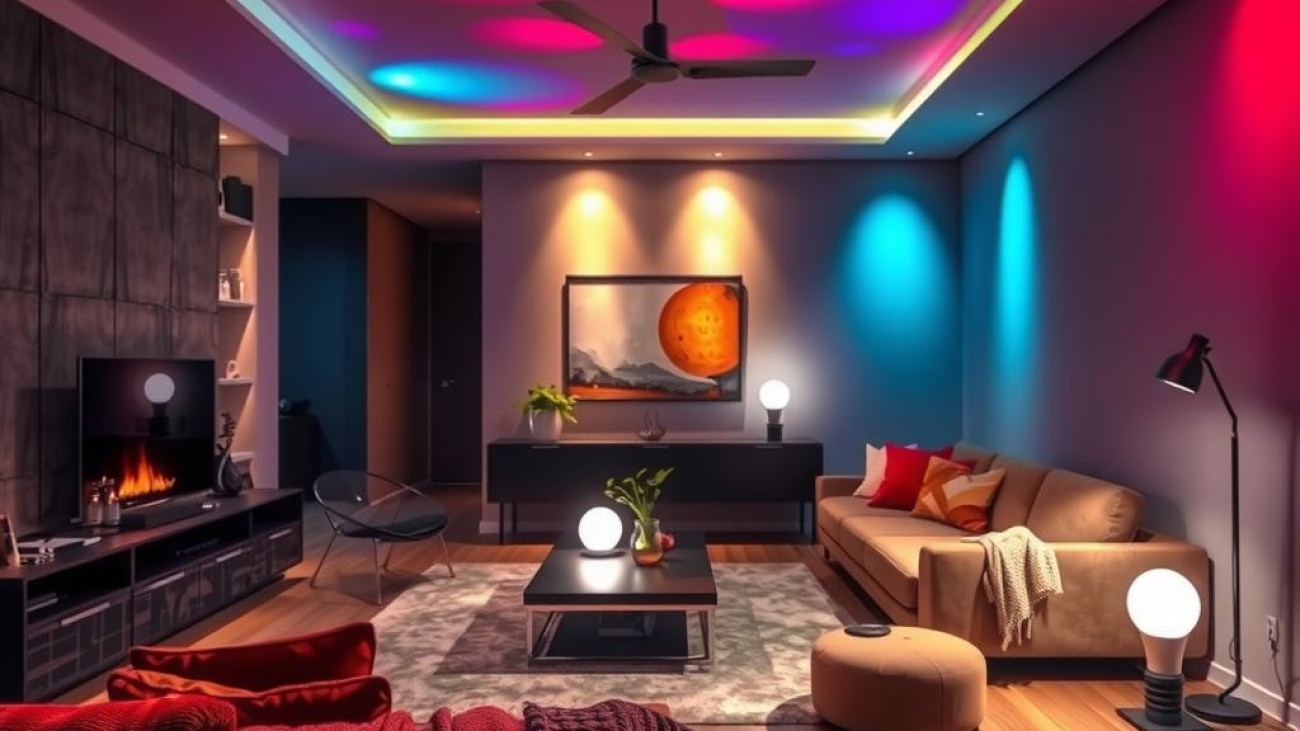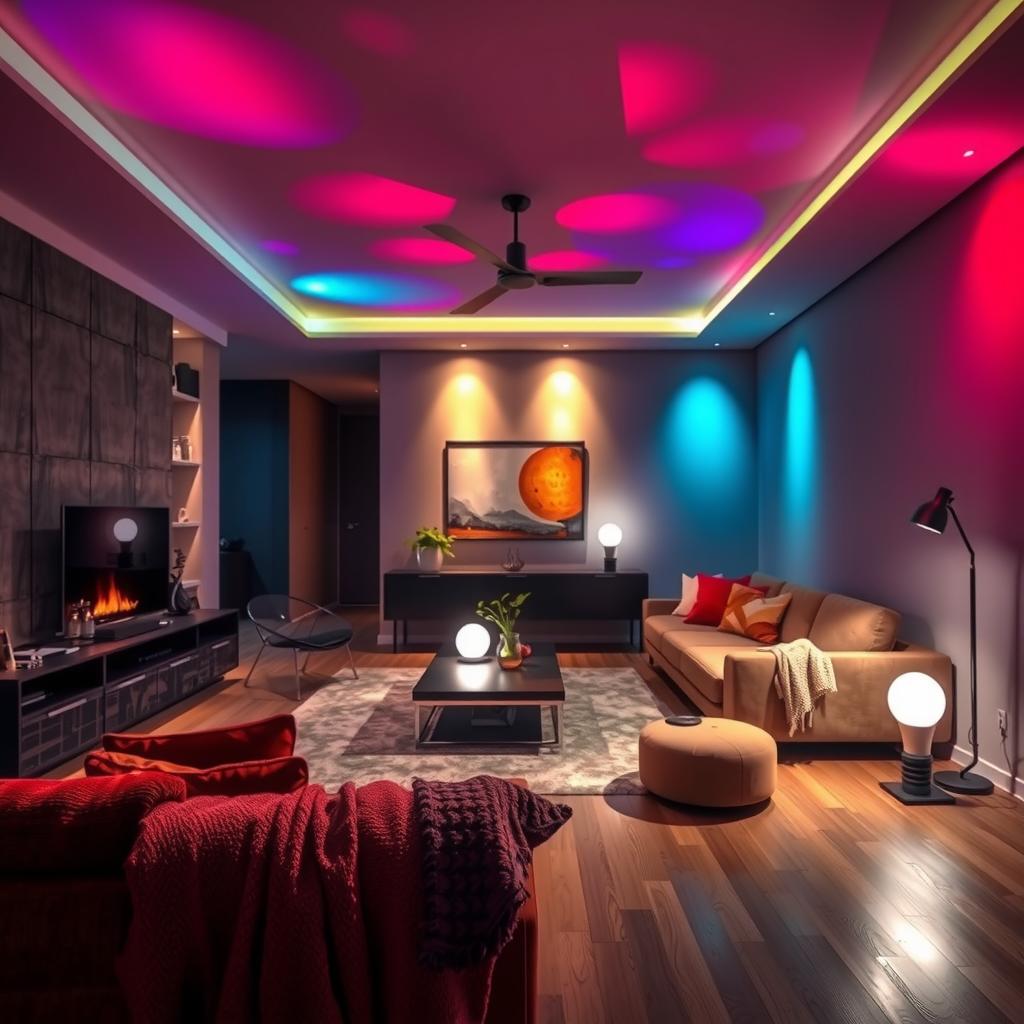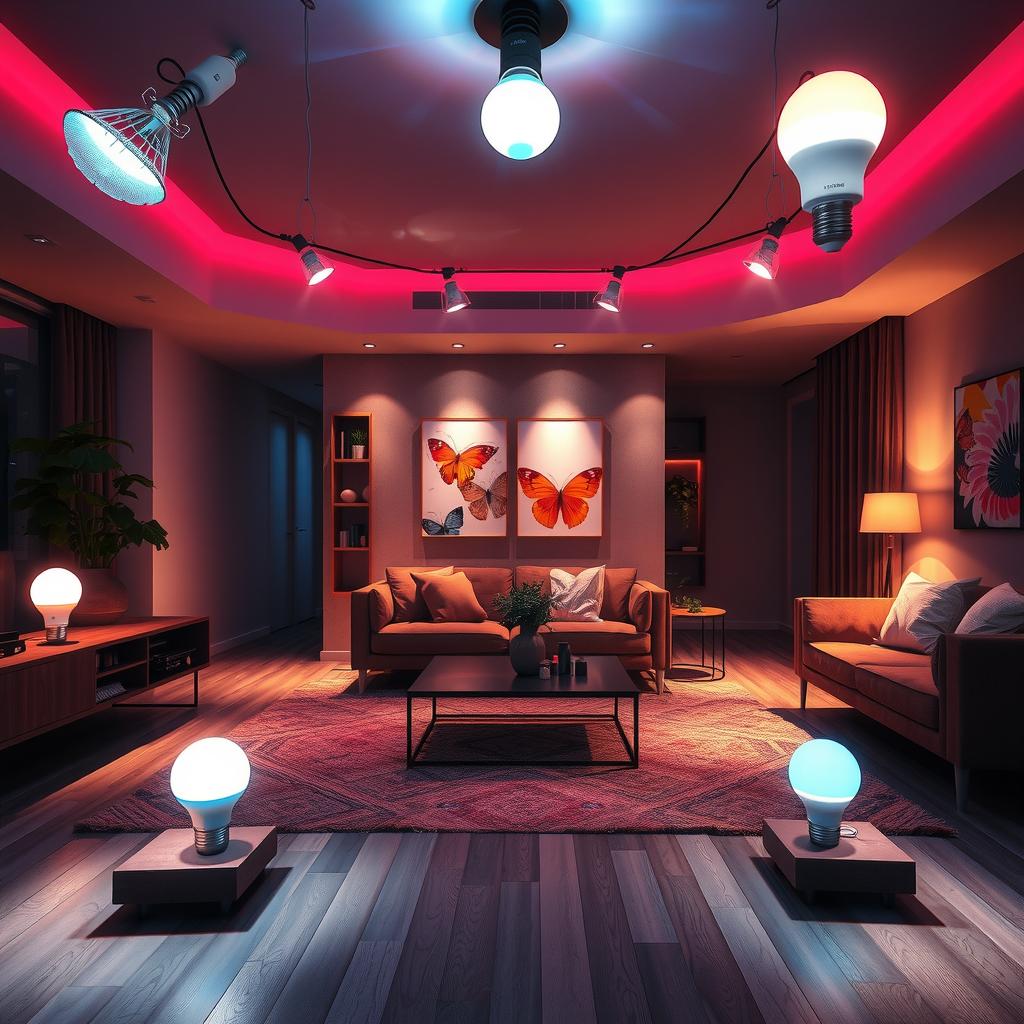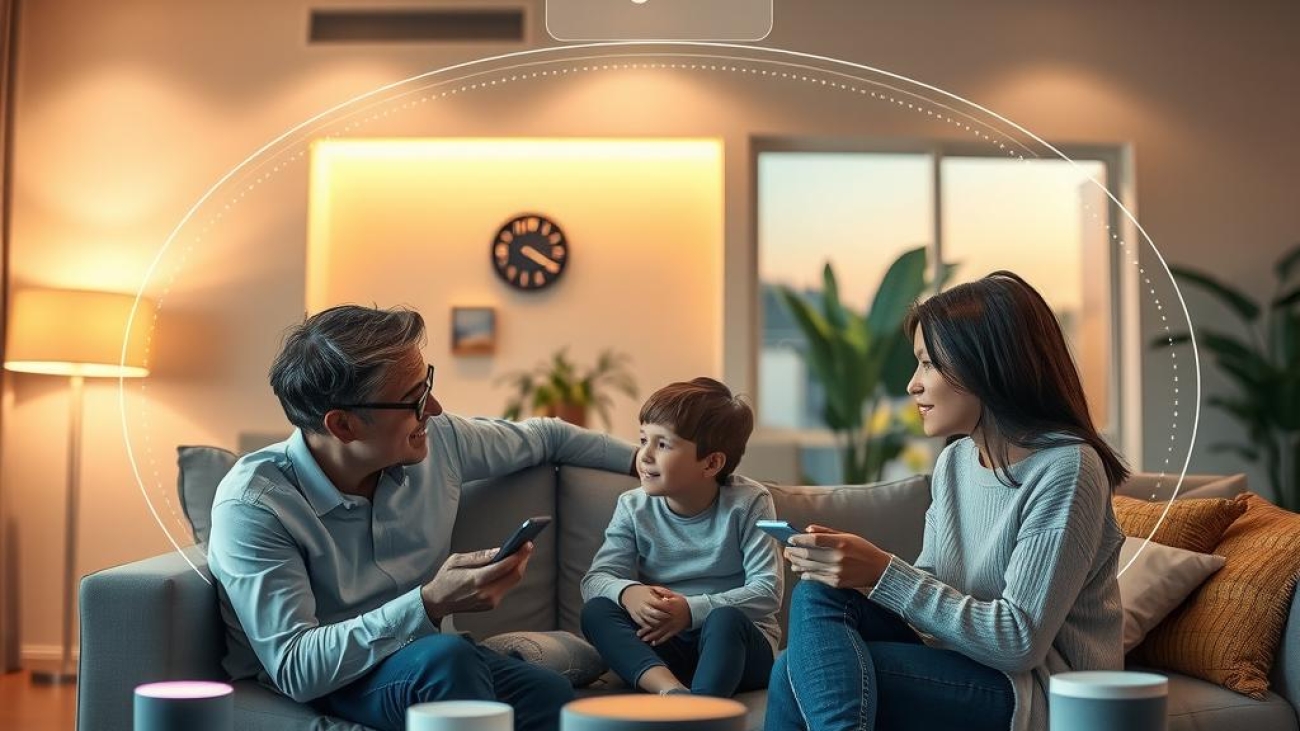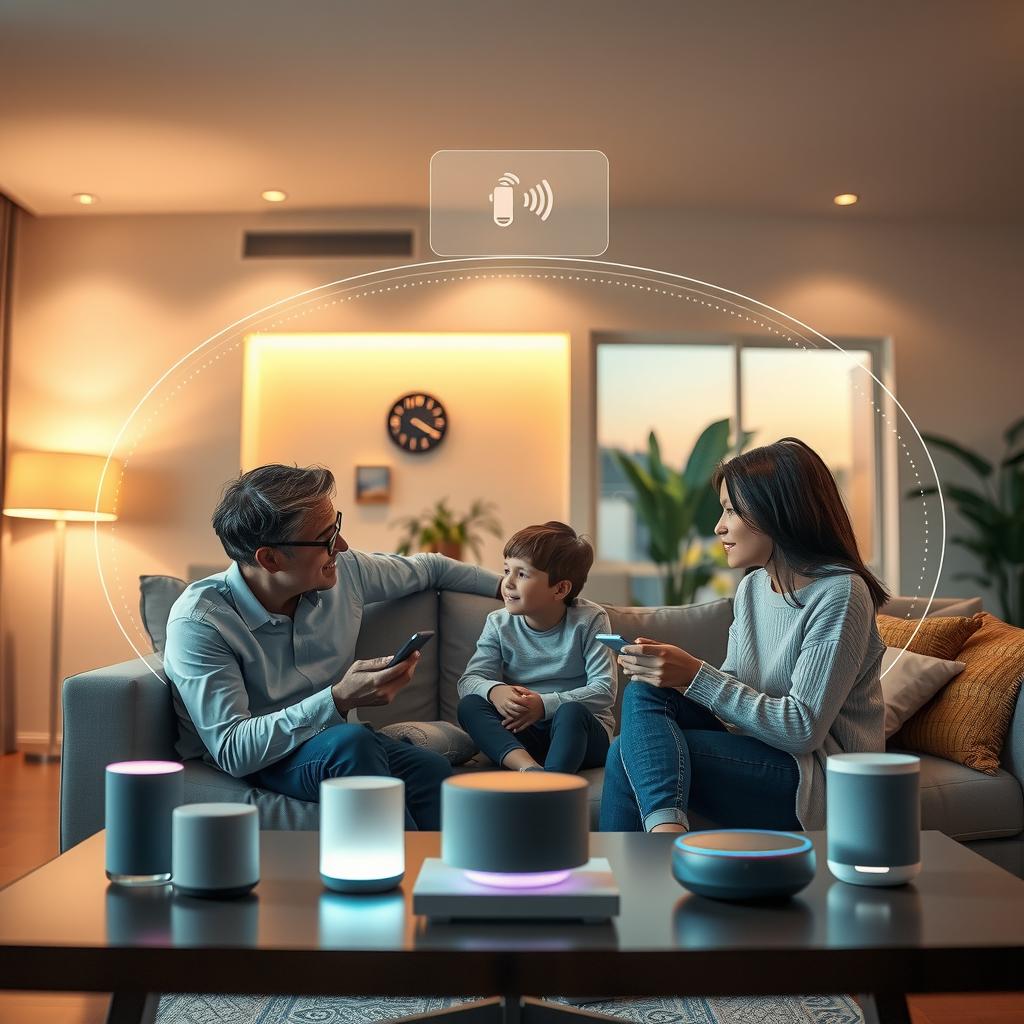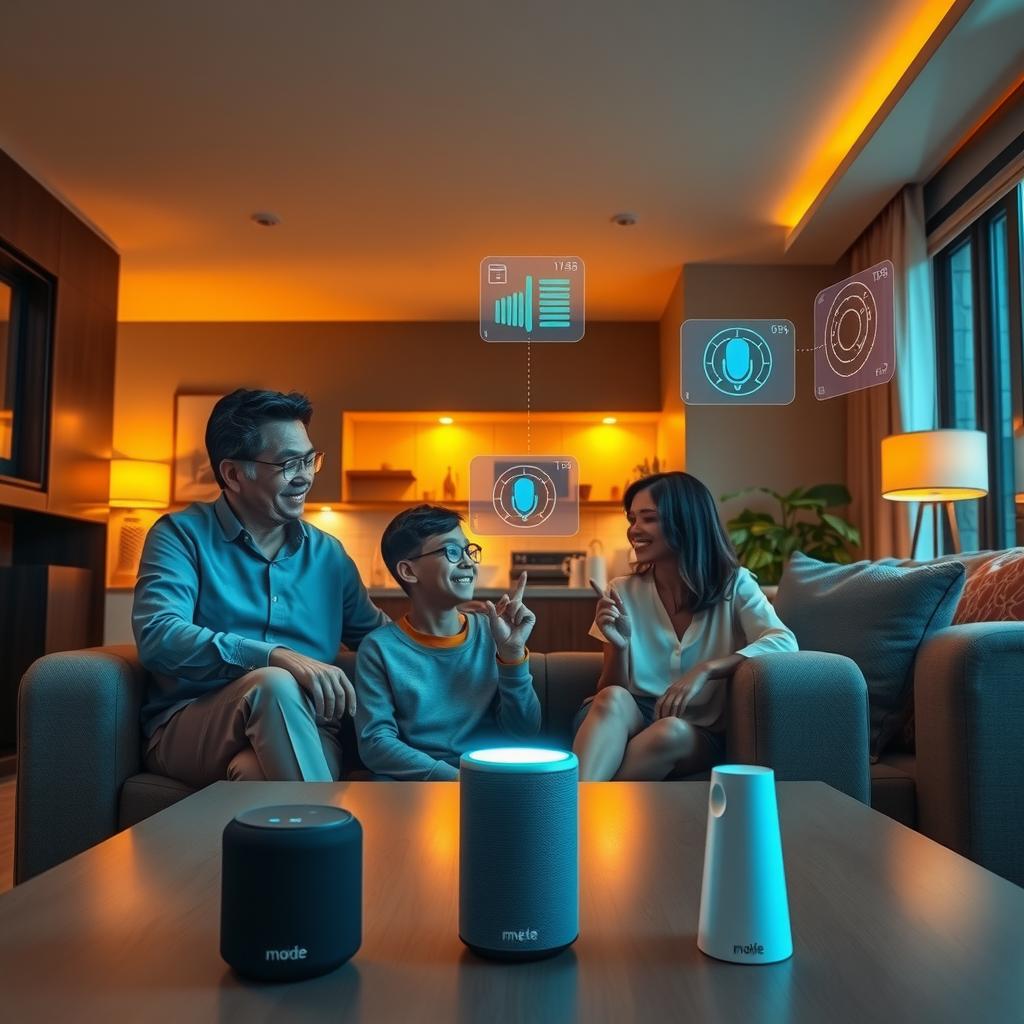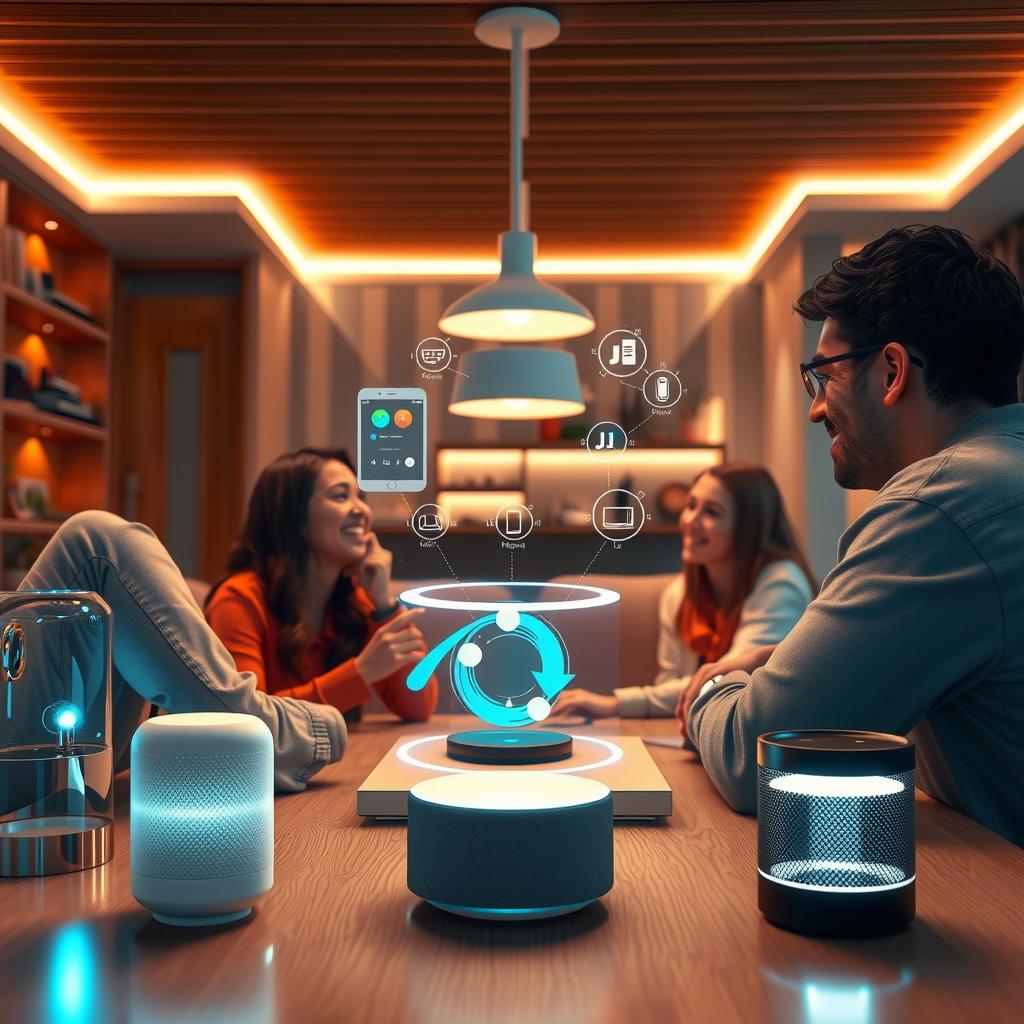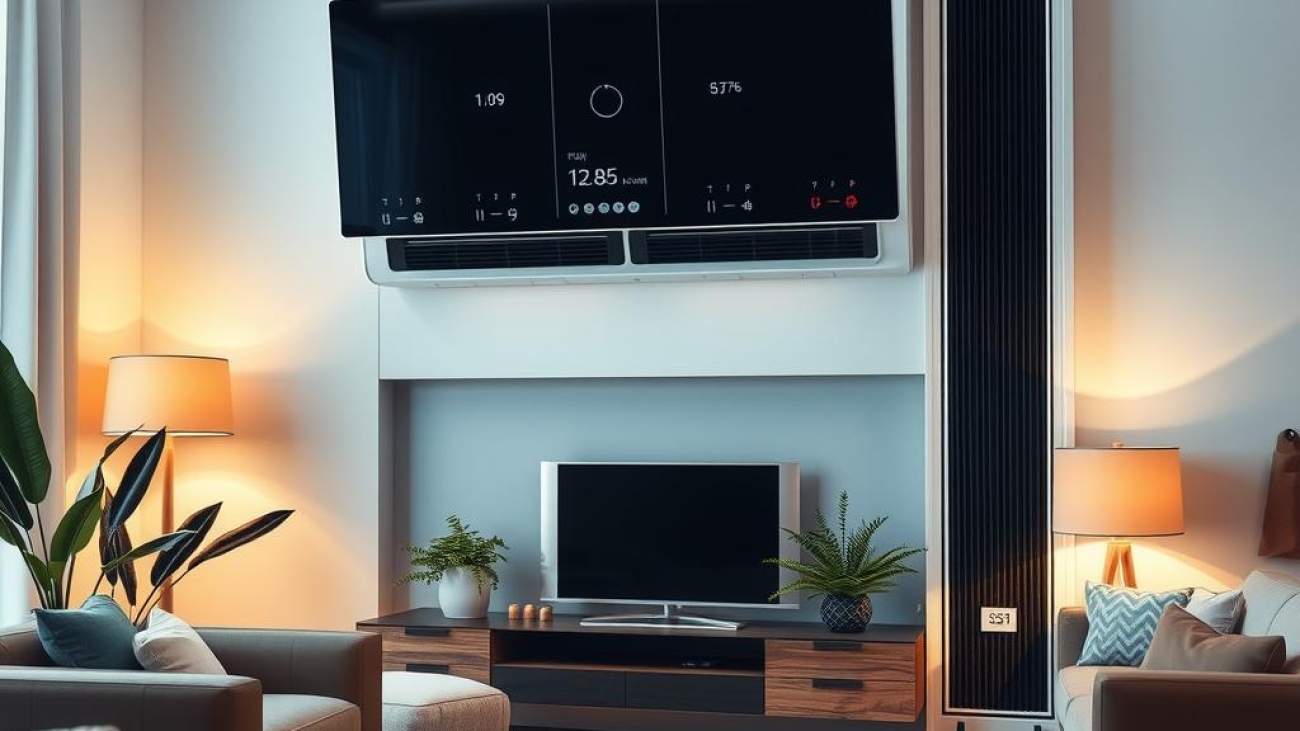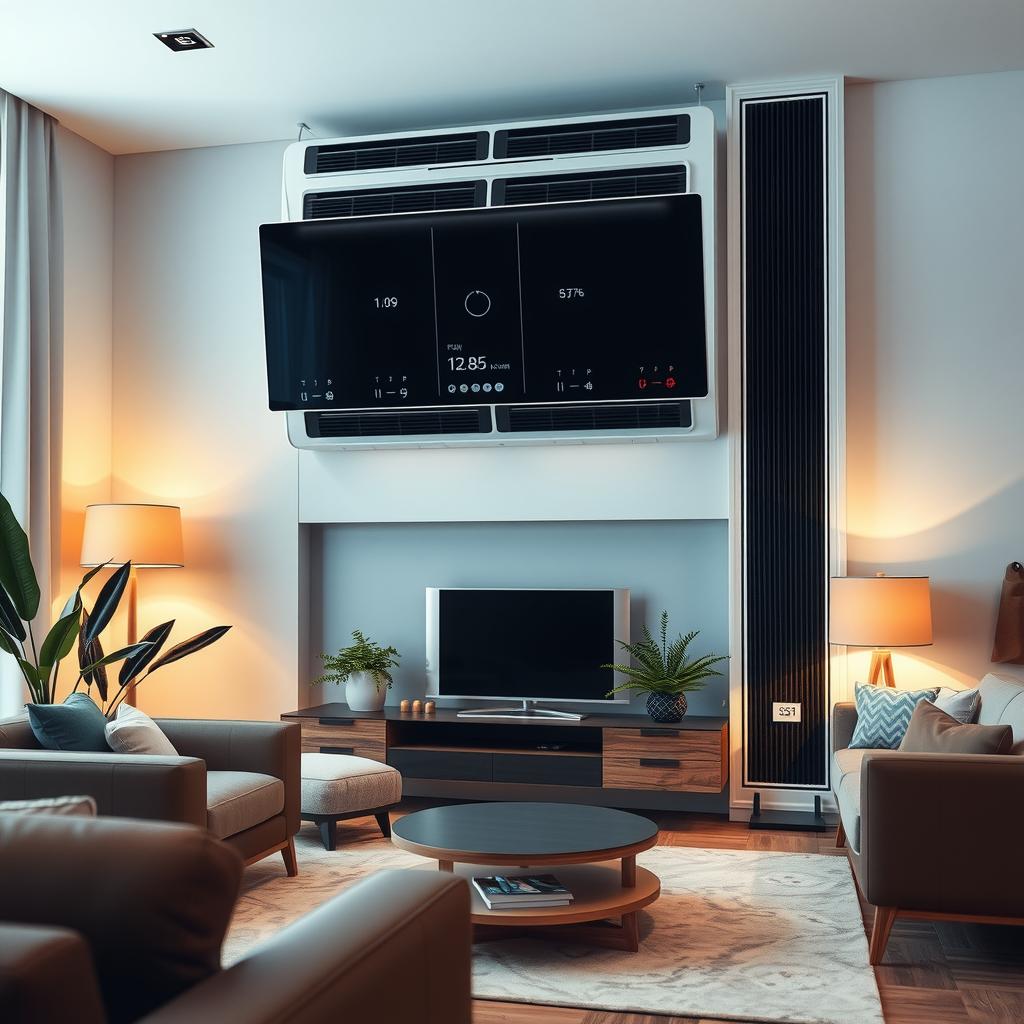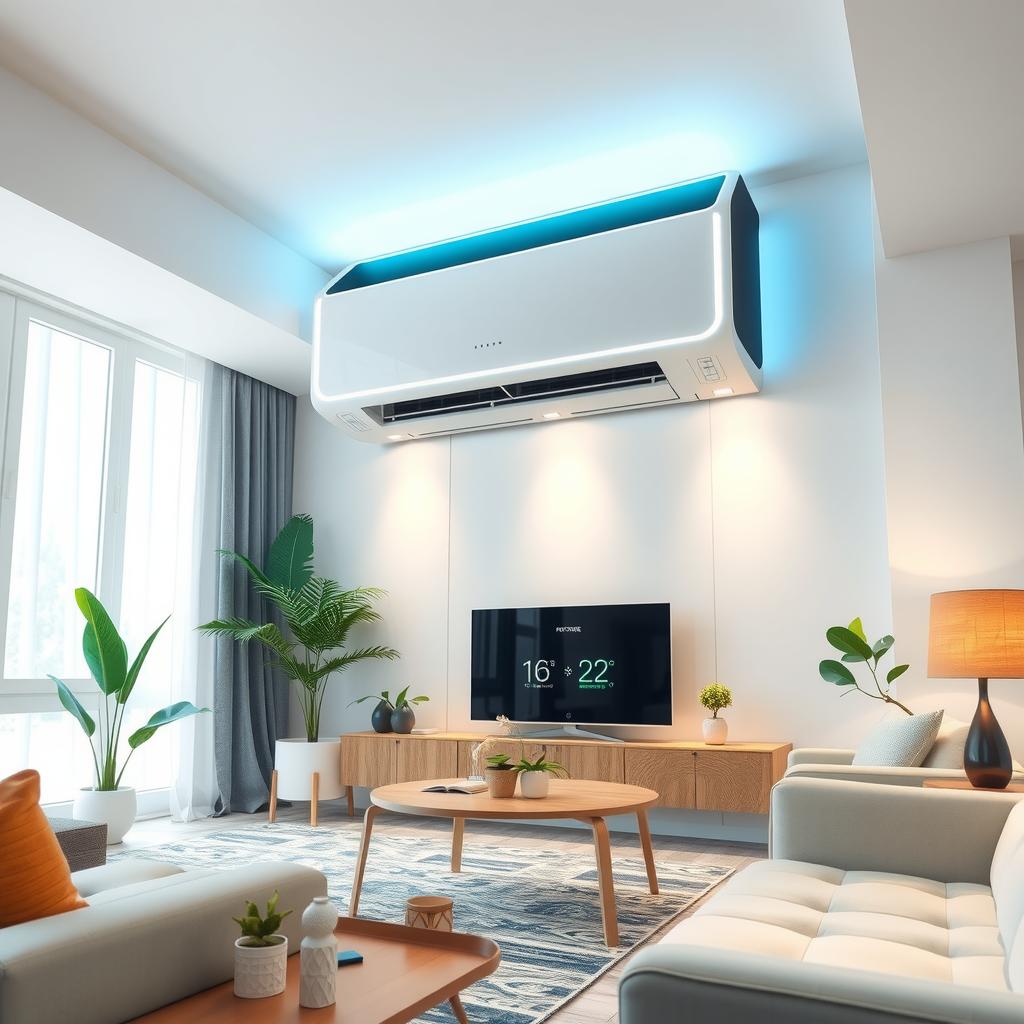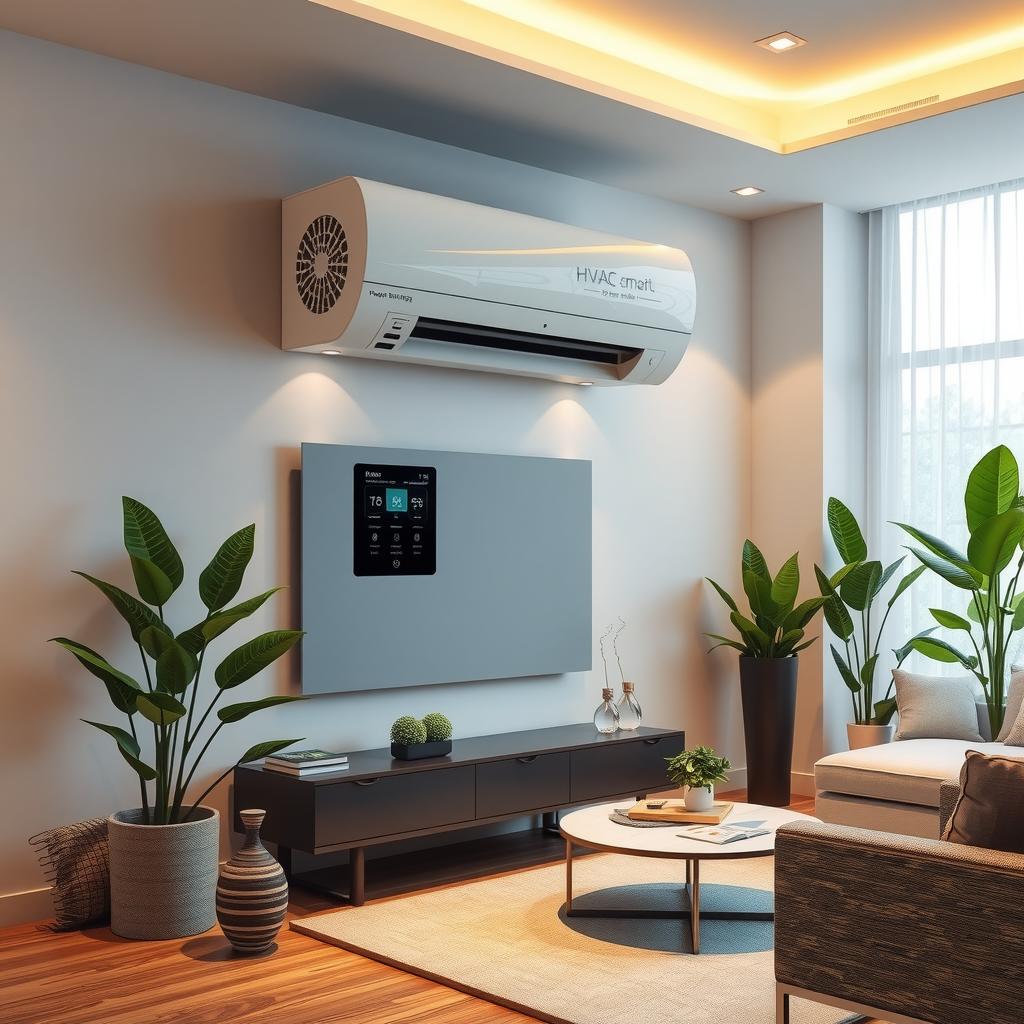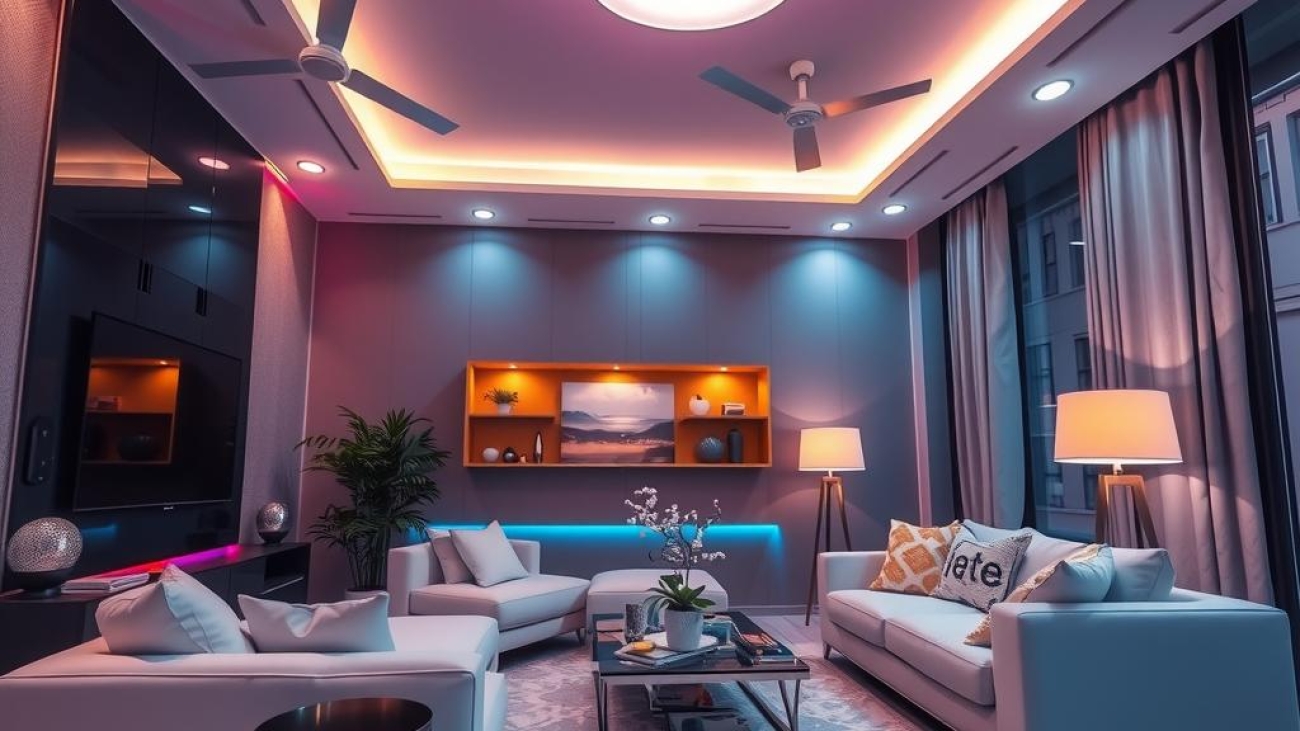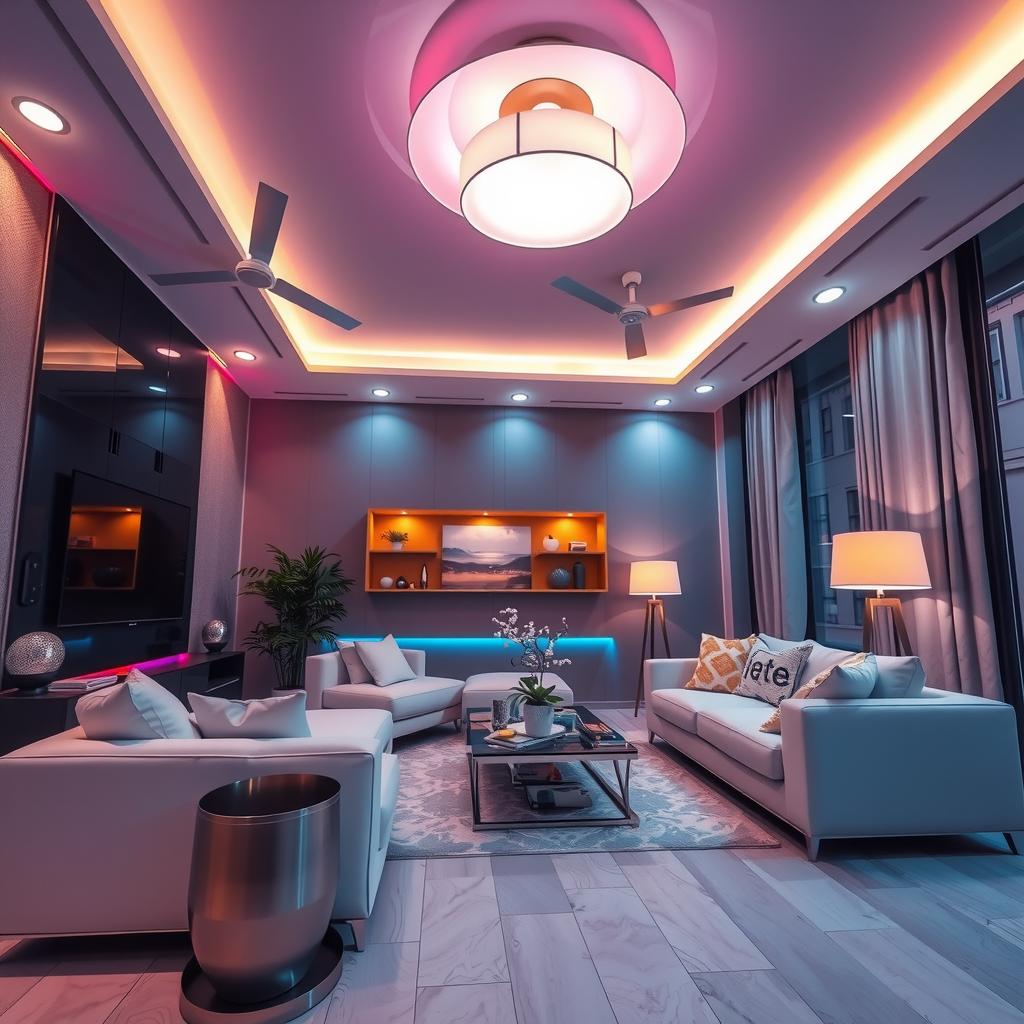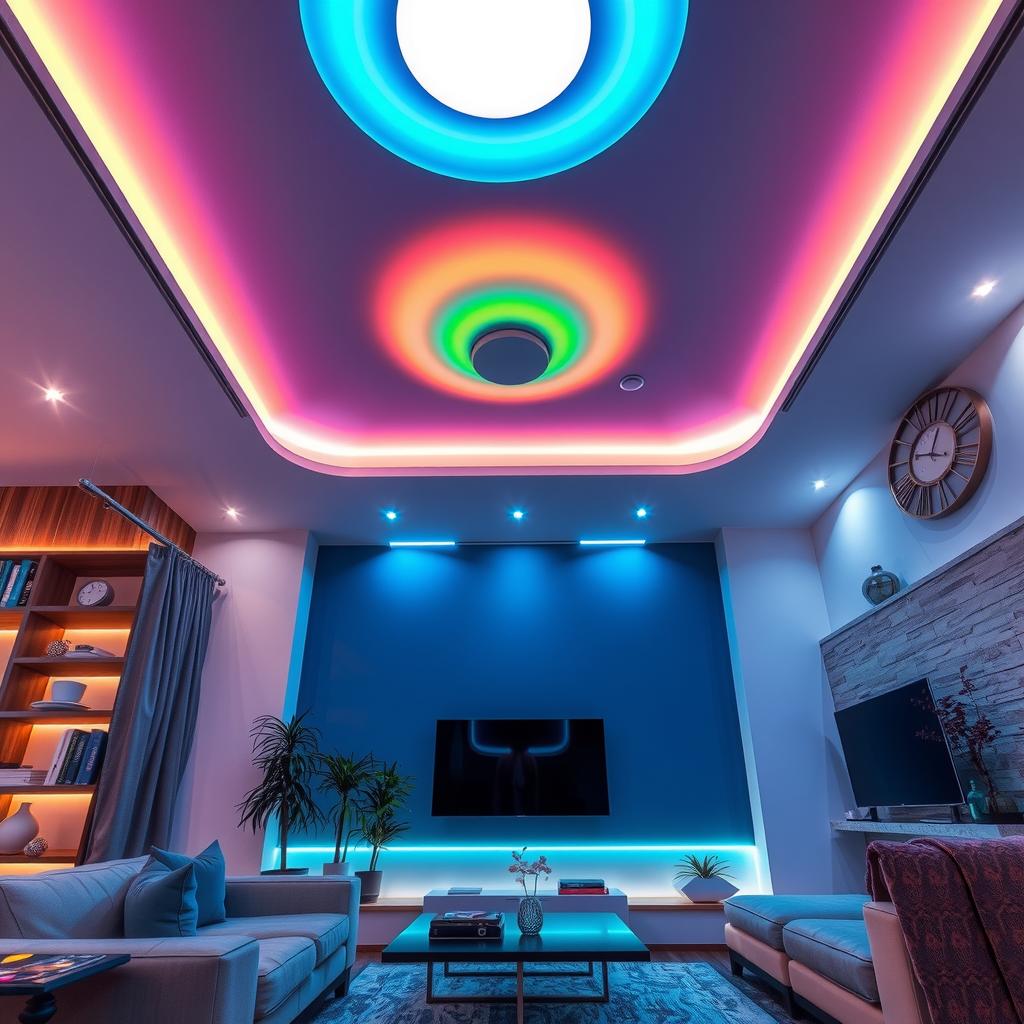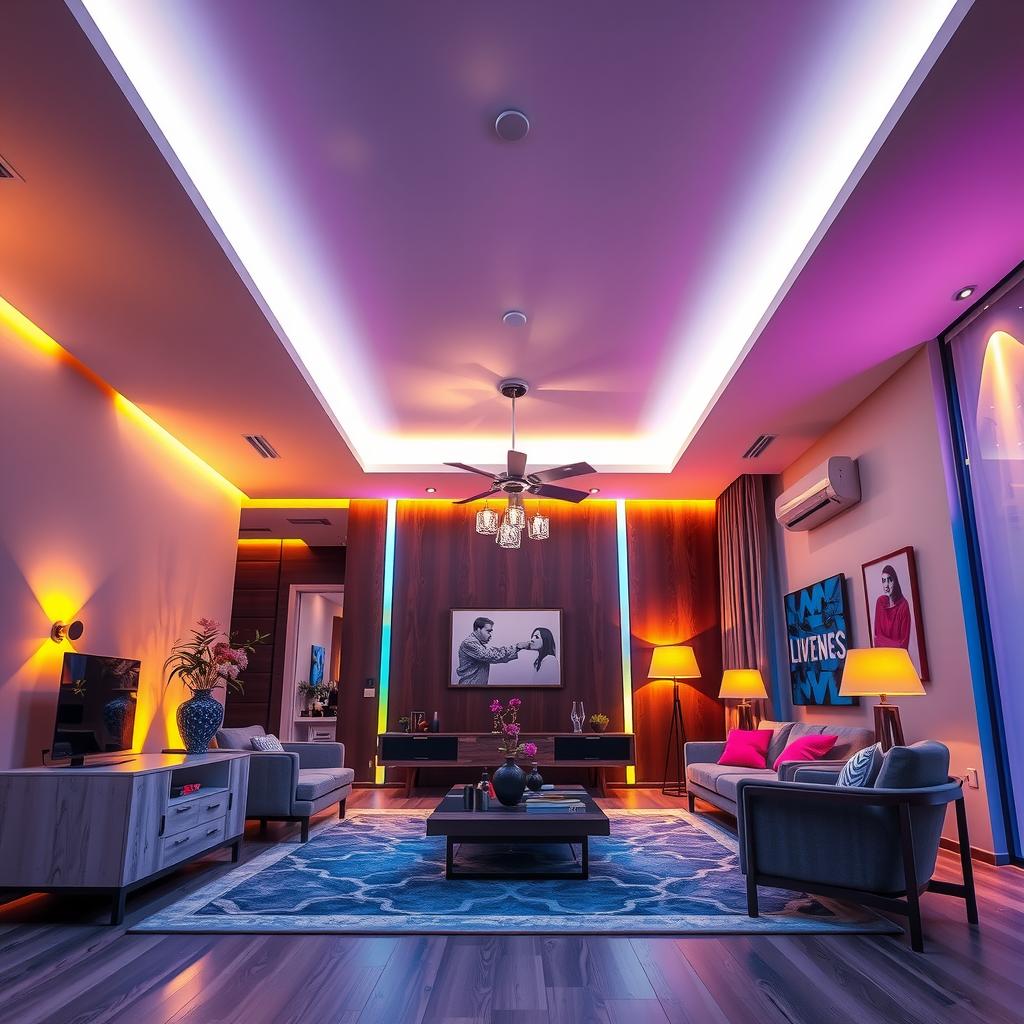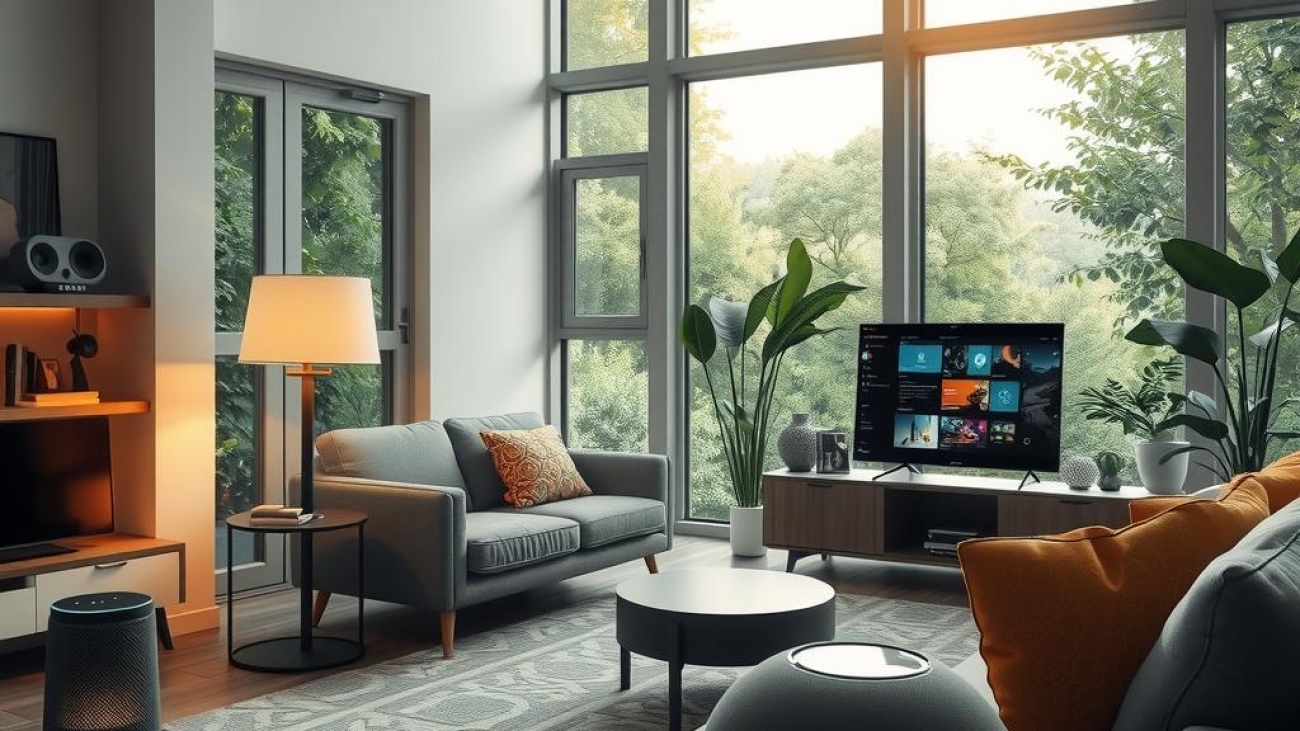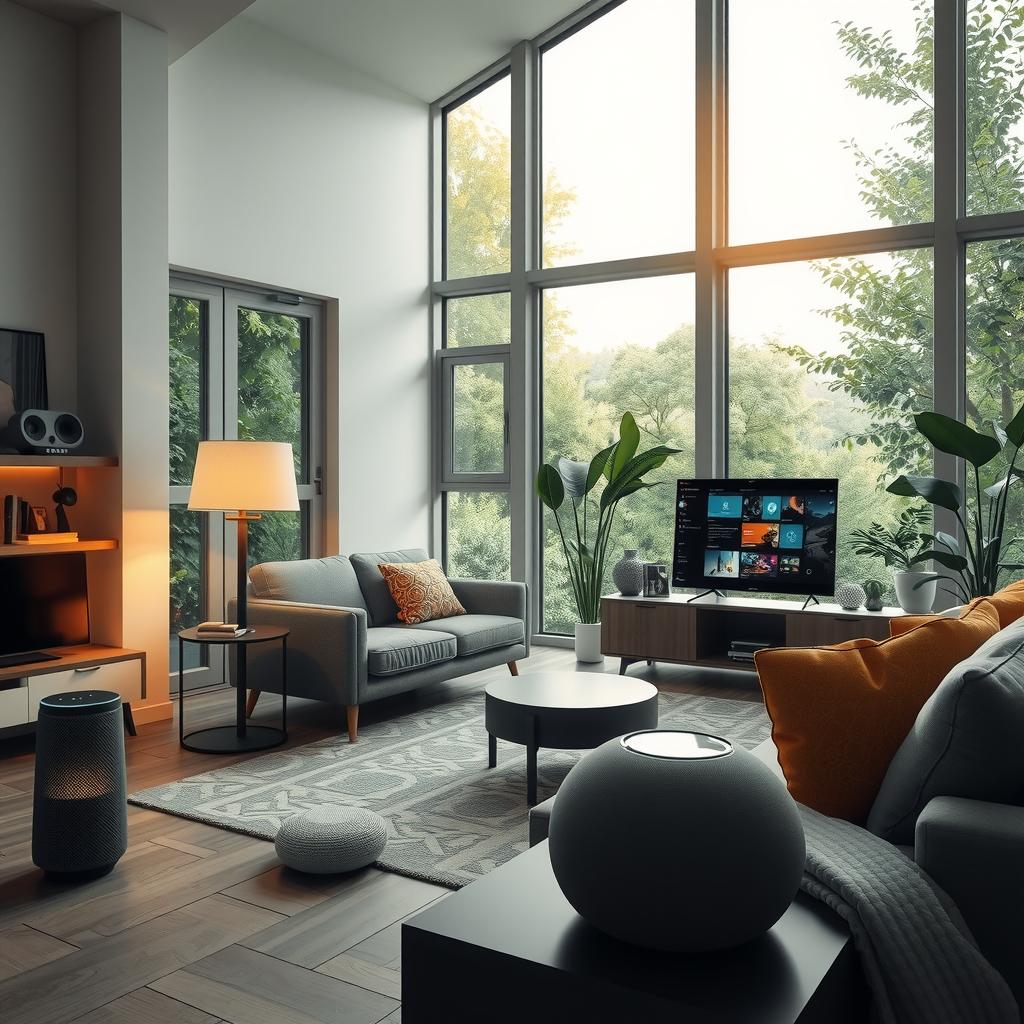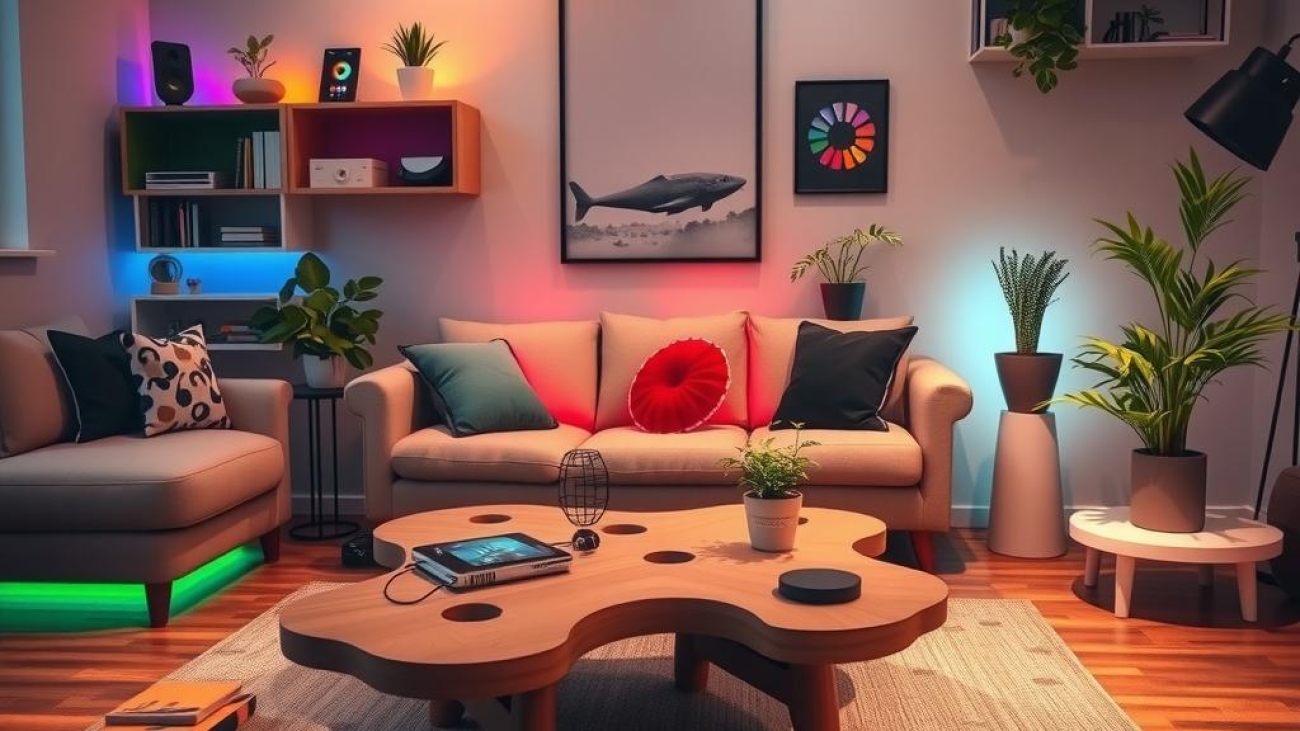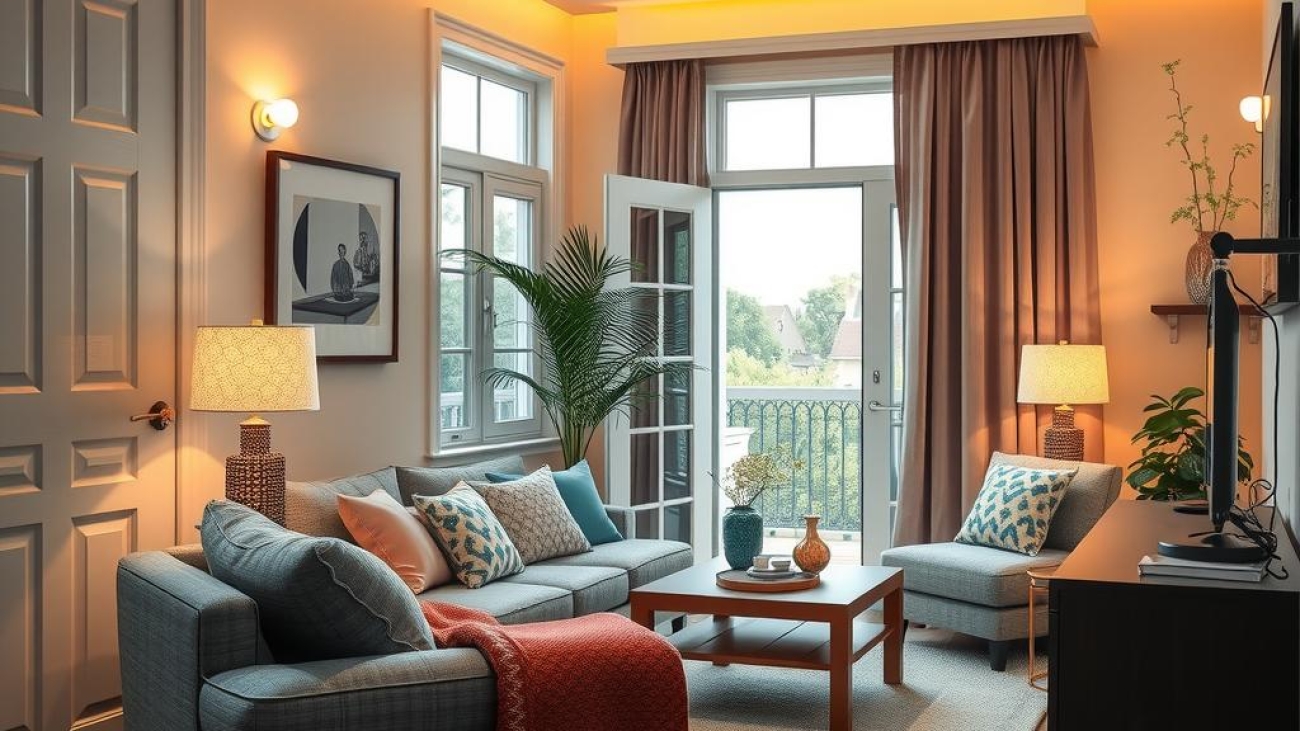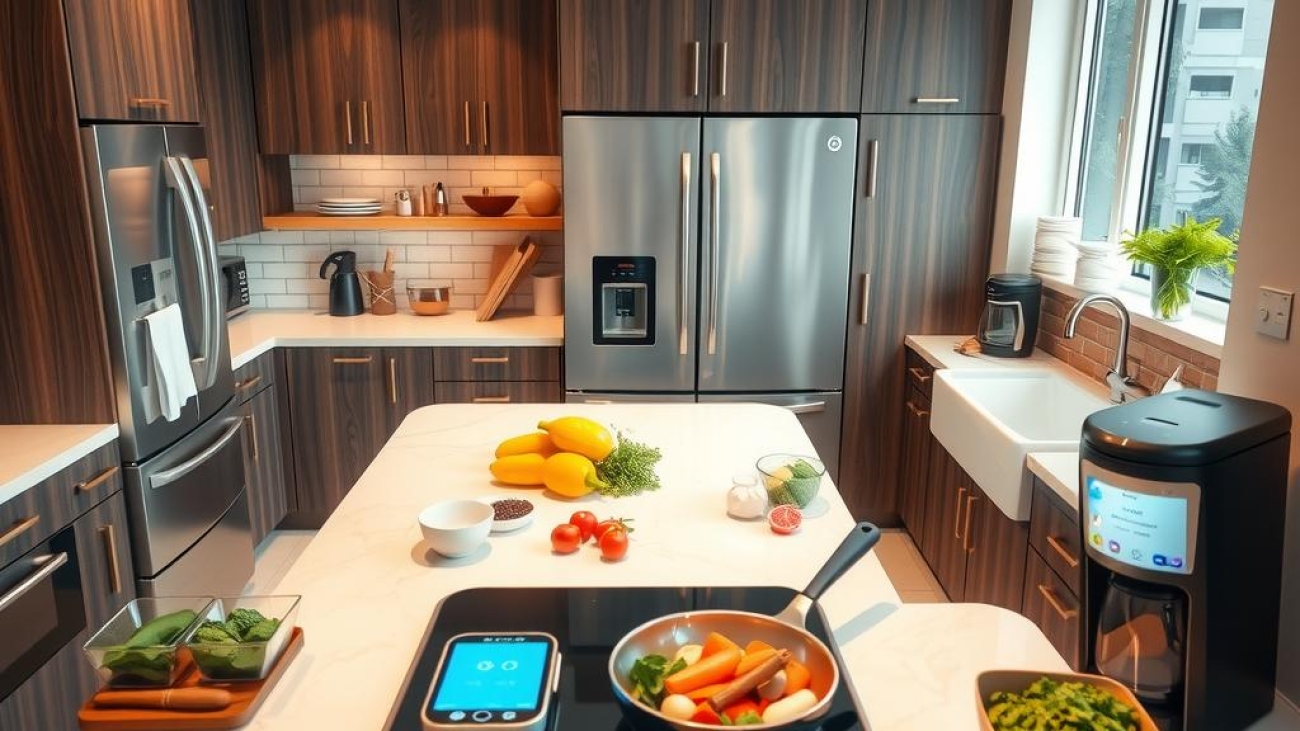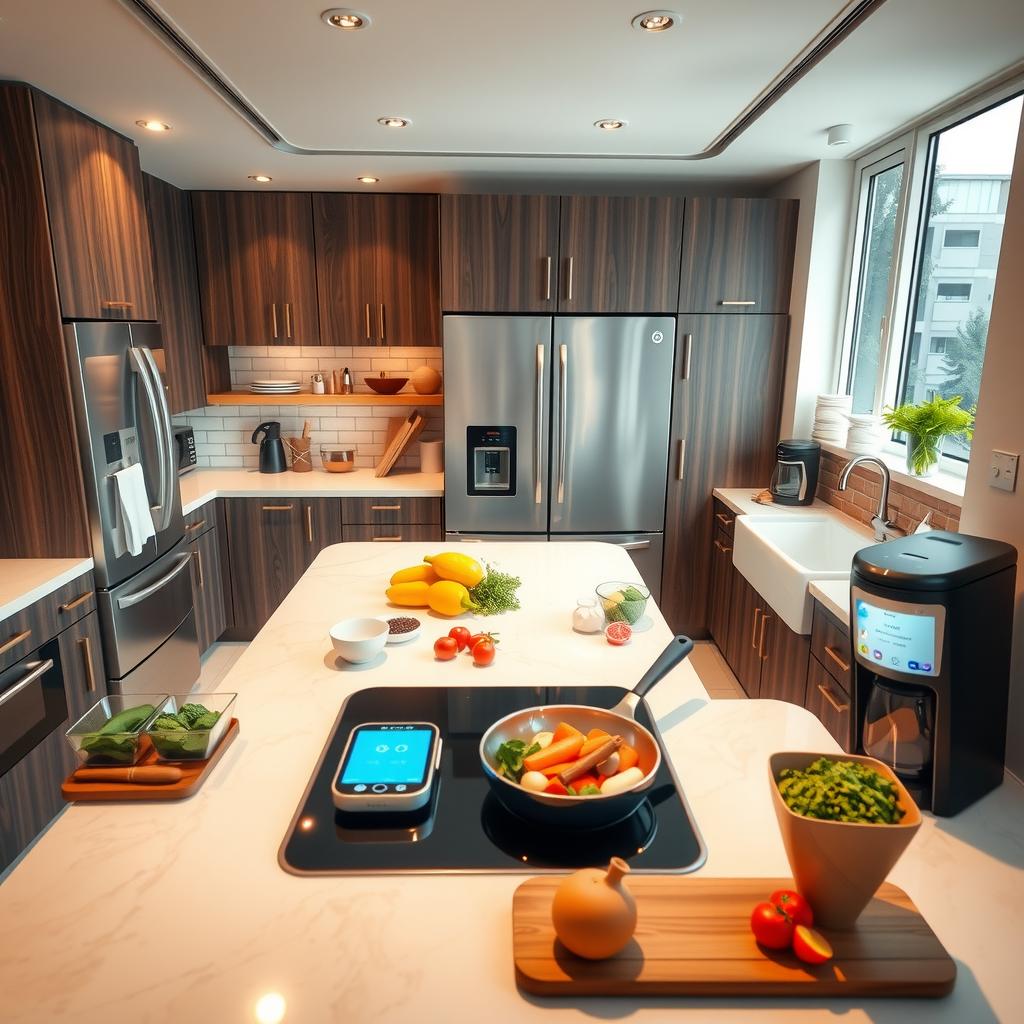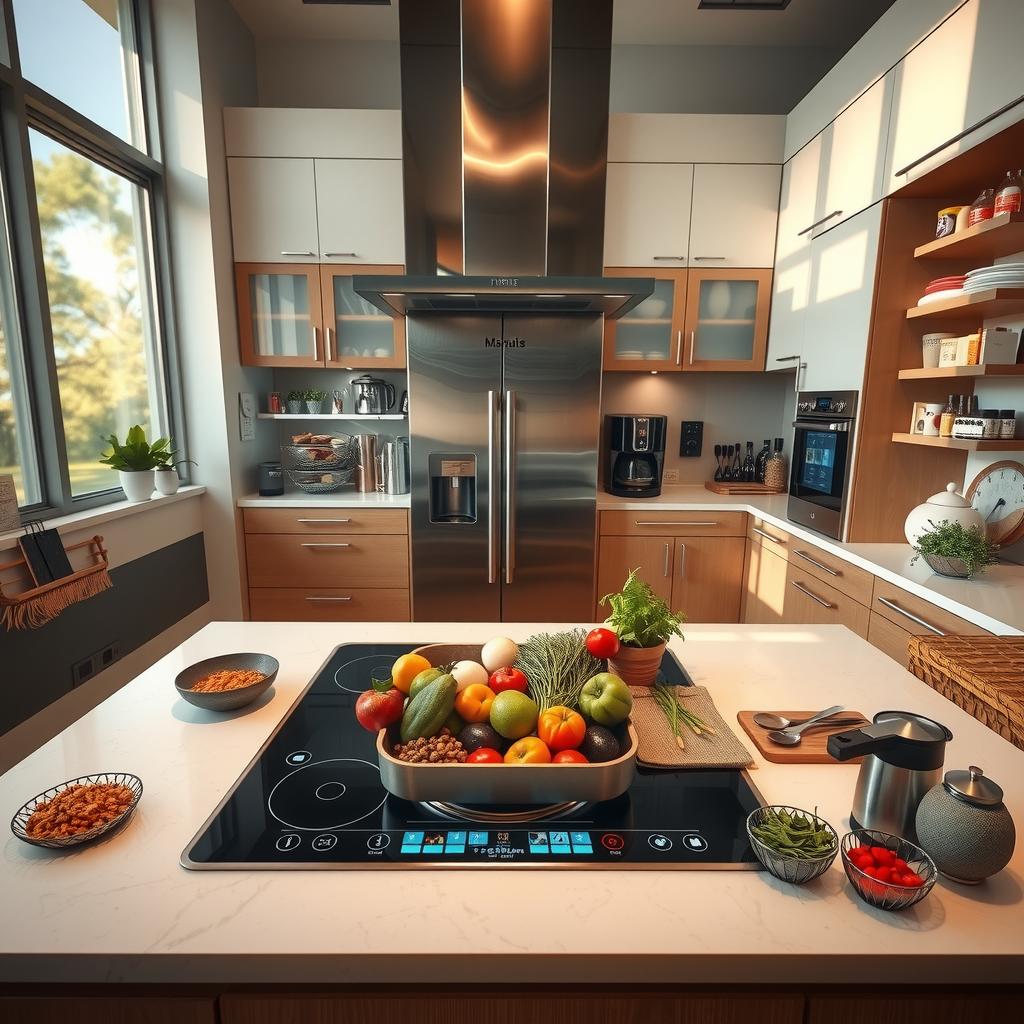Embracing the Future of Home Automation: DIY Smart Home Projects for a Budget-Friendly Upgrade
In a world where technology has become an integral part of our daily lives, the concept of the “smart home” has gained significant traction. Once considered a luxury reserved for the tech-savvy and deep-pocketed, advancements in home automation technology have made it increasingly accessible to homeowners of all budgets. DIY smart home projects offer a unique opportunity to enhance the functionality and convenience of your living space without breaking the bank.
Whether you’re looking to automate your Smart Thermostat, introduce Smart Lighting, or implement a DIY Security System, there are a plethora of budget-friendly options available to the modern homeowner. By tapping into the power of Smart Home Hubs, Smart Plugs, and Smart Speakers, you can transform your humble abode into a high-tech haven, all while keeping your wallet happy.
But the world of budget-friendly home automation extends far beyond the realm of pre-packaged smart home devices. DIY enthusiasts can explore the possibilities of Raspberry Pi home automation, smart mirrors, DIY security cameras, and even smart curtain motors – all constructed with a fraction of the cost of commercial solutions. By harnessing the power of platforms like Arduino and repurposing old smartphones as smart home controllers, homeowners can unleash their creativity and personalize their living spaces to their heart’s content.
The benefits of embracing DIY smart home projects are manifold. Not only do they offer a cost-effective way to enhance your home’s functionality, but they also provide a sense of accomplishment and ownership. Imagine the satisfaction of crafting your own smart garden watering system or DIY smart garage doors, all while keeping your budget in check.
Moreover, the advent of IFTTT (If This Then That) and Home Assistant voice control has made it easier than ever to integrate and automate various aspects of your smart home. With a wealth of DIY smart home entry resources available online, homeowners can embark on their own budget-friendly home automation journey, tailoring their living spaces to their unique needs and preferences.

Key Points:
-
Smart Thermostat: Homeowners can create an affordable smart thermostat by repurposing an old thermostat and integrating it with a Raspberry Pi or Arduino board. This allows for remote temperature control, scheduling, and integration with other smart home devices.
-
Smart Lighting: DIY smart lighting projects involve installing motion-activated or voice-controlled lighting using inexpensive components like LED strips, smart plugs, and open-source software like Home Assistant or IFTTT. This can significantly enhance a home’s ambiance and energy efficiency.
-
DIY Security System: Constructing a DIY security camera system is a cost-effective way to improve home security. Homeowners can use old smartphones, Raspberry Pis, or Arduino boards to build custom surveillance cameras and integrate them with smart home platforms.
Key Points:
-
Smart Home Hub: Establishing a central Smart Home Hub using a Raspberry Pi or similar single-board computer allows homeowners to control various smart devices, automate tasks, and create custom routines. This can serve as the foundation for a comprehensive DIY smart home system.
-
Smart Plugs: Incorporating Smart Plugs into the home enables remote control and scheduling of electrical devices, from lamps to kitchen appliances. These affordable devices can be easily integrated with a Smart Home Hub or voice assistants like Smart Speakers.
-
Smart Speakers: Integrating Smart Speakers into the home allows for voice-controlled automation and seamless integration with other smart home devices. Homeowners can use Smart Speakers to issue commands, set reminders, and control various aspects of their living space.
Key Points:
-
Smart Garden Watering System: Creating a DIY Smart Garden Watering System using Arduino boards or Raspberry Pis can help homeowners monitor soil moisture levels and automate the irrigation process, saving water and ensuring the health of their gardens.
-
DIY Smart Garage Door: Homeowners can build a DIY Smart Garage Door opener using affordable motors and microcontrollers, enabling remote control and integration with smart home platforms for added convenience and security.
-
IFTTT and Home Assistant Voice Control: Leveraging platforms like IFTTT (If This Then That) and Home Assistant allows homeowners to create custom voice commands and automations, further enhancing the functionality of their DIY smart home projects.
Key Points:
- DIY Smart Home Getting Started Resources: Homeowners interested in embarking on their own DIY Smart Home journey can find a wealth of resources online, including tutorials, forums, and communities that provide guidance and support for various smart home projects.
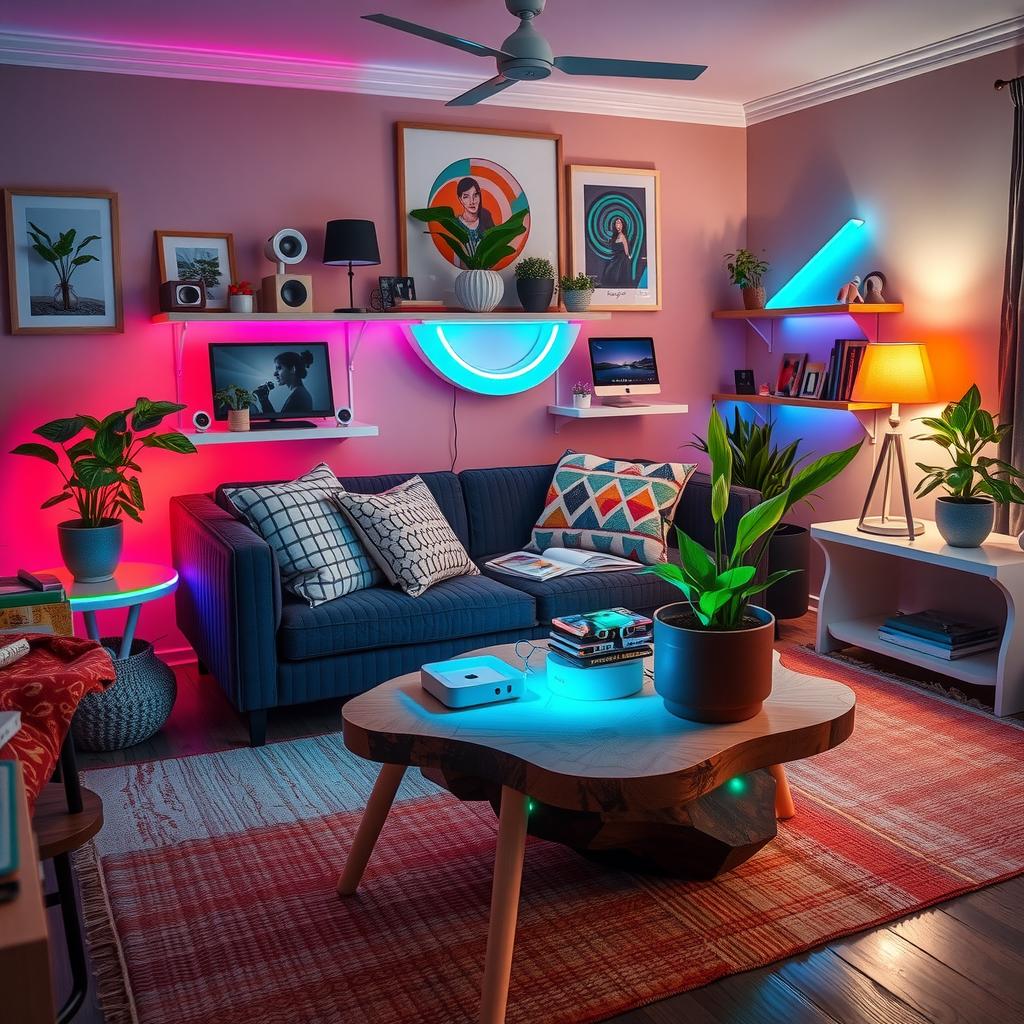
Turning a Raspberry Pi into a Home Automation Hub
Unlocking the Potential of Raspberry Pi for Smart Home Control
The Raspberry Pi has emerged as a versatile and budget-friendly platform for creating custom smart home solutions. By leveraging the power of this compact, credit card-sized computer, homeowners can transform their living spaces into intelligent, interconnected environments tailored to their specific needs and preferences. From automating lighting and climate control to building DIY security systems and integrating voice-activated assistants, the Raspberry Pi offers a world of possibilities for the modern smart home.
One of the key advantages of using a Raspberry Pi for home automation is its cost-effectiveness. Compared to proprietary smart home hubs or commercial solutions, the Raspberry Pi can be acquired for a fraction of the price, making it an attractive option for those with a limited budget. Additionally, the Raspberry Pi’s open-source nature and vast community of developers ensure a wealth of resources and support, empowering users to create custom solutions that perfectly fit their needs.
When it comes to home automation, the Raspberry Pi’s versatility shines through. It can be used as a central hub to connect and control a variety of smart devices, such as Smart Thermostats, Smart Lighting, DIY Security Systems, Smart Plugs, and Smart Speakers. By integrating these disparate components through a Raspberry Pi-powered platform, homeowners can enjoy seamless control and management of their entire smart home ecosystem, all from the convenience of their fingertips.
Unlocking the Potential of Raspberry Pi for Smart Home Control
One of the most exciting applications of the Raspberry Pi in the smart home realm is the creation of custom control interfaces. Users can repurpose old smartphones or tablets as dedicated Smart Home Hubs, leveraging the Raspberry Pi’s processing power to create intuitive, touch-based control panels that manage everything from lighting and climate to security and entertainment. This level of customization allows homeowners to design a smart home experience that truly caters to their unique preferences and needs.
Beyond traditional home automation, the Raspberry Pi’s versatility extends to innovative DIY projects. Enthusiasts can explore the creation of Smart Mirrors, DIY Security Cameras, Smart Curtain Motors, and even Custom Sensors powered by Arduino boards. These projects not only enhance the functionality of the home but also foster a spirit of creativity and personalization, empowering homeowners to truly make their smart home their own.
Integrating Smart Home Automation with Raspberry Pi
As the smart home ecosystem continues to evolve, the Raspberry Pi’s role as a central hub becomes increasingly valuable. By leveraging platforms like IFTTT and Home Assistant, users can seamlessly integrate various smart home devices, creating a cohesive and intelligent environment that responds to their needs and preferences. Whether it’s automating the watering of a Smart Garden, controlling the DIY Smart Garage Door, or orchestrating a symphony of Smart Lighting and Smart Plugs, the Raspberry Pi provides the foundation for a truly customized smart home experience.
The beauty of using a Raspberry Pi for home automation lies in the endless possibilities it offers. As a cost-effective, open-source solution, it empowers homeowners to explore, experiment, and create their own unique smart home ecosystems, tailored to their specific needs and aspirations. By harnessing the power of the Raspberry Pi, the smart home of the future is within reach, providing a transformative and personalized living experience for all.
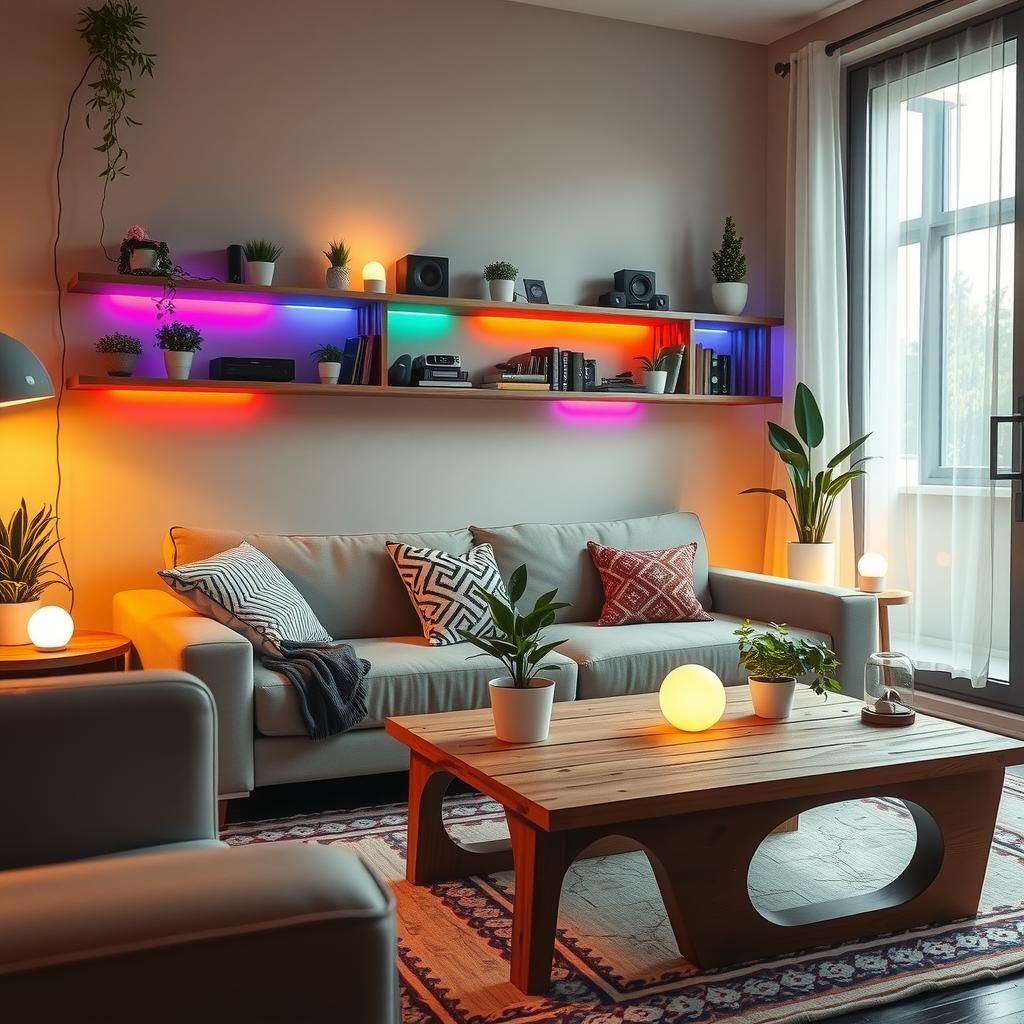
Building a Smart Mirror – Transform an Ordinary Mirror into a Functional Masterpiece
Elevating the Ordinary: Creating a Smart Mirror
Imagine a mirror that’s more than just a reflection of yourself – a mirror that can display the time, weather, news headlines, and even act as a digital assistant. This is the essence of a smart mirror, a technological marvel that seamlessly blends form and function. By transforming an ordinary mirror into an intelligent, interactive display, you can elevate your daily routine and bring a touch of futuristic flair to your home.
The process of building a smart mirror involves a harmonious integration of hardware and software components. At the heart of this project lies a display, typically a small LCD or OLED panel, which is carefully positioned behind the mirror’s reflective surface. This display, powered by a compact computer such as a Raspberry Pi or an old smartphone, becomes the canvas upon which your smart mirror’s functionality is brought to life.
One of the key advantages of a smart mirror is its ability to provide information at a glance. With a quick glance, you can check the current time, the day’s weather forecast, or even the latest news headlines. This convenient access to data can help you plan your day more effectively and keep you informed without the need to constantly reach for your smartphone.
Beyond the practical applications, a smart mirror can also serve as a interactive hub for your Smart Home ecosystem. By integrating with various Smart Home devices, such as Smart Thermostat, Smart Lighting, and DIY Security System, your smart mirror can become a central command center for your home’s automation. With a few taps or voice commands, you can control the temperature, adjust the lighting, or monitor your home’s security, all from the comfort of your mirror.
Customizing Your Smart Mirror Experience
The true beauty of a smart mirror lies in its customizability. Using a range of open-source software and DIY projects, you can tailor the mirror’s functionality to suit your unique needs and preferences. Whether you’re interested in displaying your personal calendar, controlling Smart Plugs, or even integrating Smart Speakers for voice-activated commands, the possibilities are endless.
One particularly captivating aspect of a smart mirror is its ability to serve as a digital assistant. By incorporating virtual assistant technologies, such as Smart Home Hub integration, your mirror can respond to voice commands, answer questions, and even set reminders or alarms. This seamless interaction with technology can elevate your daily routine and make your mornings more productive and efficient.
For the DIY enthusiast, building a smart mirror can be a rewarding and educational experience. By delving into the world of electronics, programming, and home automation, you can unleash your creativity and personalize your smart mirror to reflect your unique style and needs. From custom-designed frames to specialized software configurations, the opportunities for personalization are boundless.
Unlocking the Future of Everyday Interaction
As you embark on your smart mirror journey, you’ll not only transform the way you interact with your home but also catch a glimpse of the future of everyday technology. Smart mirrors represent a convergence of cutting-edge innovations, empowering you to seamlessly blend digital functionality with the familiar and tangible. By embracing this technology, you can elevate your daily routine, streamline your smart home experience, and inspire others to explore the boundless potential of DIY home automation.
Embracing the Smart Mirror Revolution
In the ever-evolving landscape of smart home technology, the smart mirror stands as a testament to the remarkable advancements that can be achieved through innovative thinking and a willingness to challenge the boundaries of traditional design. By transforming an ordinary mirror into a powerful, customizable hub of information and automation, you can unlock a new era of seamless, intelligent interaction with your living space. Whether you’re a tech-savvy enthusiast or simply seeking to modernize your home, the smart mirror offers a captivating and versatile solution that promises to redefine the way you experience your daily life.
Information-Rich Display for Weather
Visualizing Weather Data with Clarity
Weather information is essential for planning our daily activities, from deciding what to wear to preparing for natural disasters. An information-rich display that can effectively present weather data is a valuable tool for both personal and professional use. This type of display can provide a comprehensive overview of current and forecasted weather conditions, enabling users to make informed decisions.
One of the key features of an information-rich weather display is its ability to present data in a visually appealing and easy-to-understand format. This can include the use of intuitive icons, color-coded graphics, and interactive visualizations to convey information such as temperature, precipitation, wind speed, and humidity. By combining these elements, the display can offer a clear and concise representation of the weather, making it accessible to a wide range of users, from weather enthusiasts to professionals in industries like aviation, agriculture, or construction.
Another important aspect of an information-rich weather display is its ability to provide detailed and localized data. This can include hyperlocal forecasts, real-time weather updates, and historical weather patterns for a specific geographic area. This level of granularity allows users to make more accurate decisions based on the specific conditions in their immediate surroundings, rather than relying on general regional or national forecasts.
Additionally, an information-rich weather display can integrate with other smart home devices and technologies, such as Smart Thermostat, Smart Lighting, or a DIY Security System. This integration can enable automated adjustments to home environments based on the current and forecasted weather, optimizing energy usage and improving overall comfort and safety. For example, the display could trigger the Smart Plugs to turn on the Smart Speakers when inclement weather is expected, providing audio alerts and updates to the homeowner.
Furthermore, the versatility of an information-rich weather display can be enhanced by its ability to be customized and personalized to the user’s preferences. This can include the ability to select specific data points to be displayed, adjust the visual layout and themes, and set up personalized alerts and notifications for weather events that are relevant to the user’s needs.
In conclusion, an information-rich display that can show weather data is a powerful tool for providing comprehensive and easily accessible weather information. By combining visual clarity, localized data, and integration with smart home technologies, this type of display can empower users to make more informed decisions and better prepare for the ever-changing weather conditions.
Enhancing Weather Monitoring with Advanced Sensors
The evolution of smart home technology has revolutionized the way we monitor and interact with weather information. One of the key advancements in this field is the integration of advanced sensors within an information-rich weather display. These sensors can provide a deeper level of detail and accuracy, enabling users to better understand the nuances of the local weather conditions.
One such sensor that can be incorporated into an information-rich weather display is a high-precision thermometer. This sensor can measure temperature with a high degree of accuracy, allowing the display to provide users with real-time temperature readings that are tailored to their specific location. This level of granularity is particularly useful for individuals who need to monitor temperature fluctuations for various purposes, such as agricultural or industrial applications.
Another essential sensor that can be integrated into an information-rich weather display is a hygrometer, which measures the relative humidity in the air. This data can be crucial for understanding the comfort level and potential weather-related issues, such as the risk of mold or condensation. By combining temperature and humidity readings, the display can provide a comprehensive picture of the local atmospheric conditions, enabling users to make more informed decisions about their daily activities or home environment management.
In addition to temperature and humidity sensors, an information-rich weather display can also incorporate wind speed and direction sensors. These sensors can provide valuable information about airflow patterns, which can be crucial for activities like sailing, aviation, or outdoor events. By displaying real-time wind data, the display can help users make informed decisions about the safety and feasibility of their planned activities.
Furthermore, the integration of precipitation sensors can greatly enhance the capabilities of an information-rich weather display. These sensors can detect and measure the amount of rainfall, snowfall, or other forms of precipitation, allowing the display to provide accurate and up-to-date information about the current and forecasted precipitation levels in the user’s area. This data can be particularly useful for individuals who need to plan outdoor activities or manage their home’s irrigation system.
By leveraging advanced sensors, an information-rich weather display can provide users with a more comprehensive and accurate understanding of the local weather conditions. This level of detail and precision can
News
The Evolving Landscape of Global News Coverage
In the ever-changing world of journalism, the news industry has undergone a remarkable transformation, adapting to the demands of the digital age. The ability to access information from a multitude of sources, both local and global, has revolutionized the way we consume and interact with news. As technology continues to advance, news outlets have embraced new platforms and formats, offering readers a more engaging and comprehensive news experience.
One of the notable trends in the news landscape is the increasing emphasis on multimedia storytelling. Alongside traditional text-based articles, news organizations have embraced the power of visual and audio content to captivate their audiences. From interactive infographics and data visualizations to captivating video reports and podcasts, the news industry has recognized the importance of delivering information in a dynamic and engaging manner. This multimodal approach not only enhances the user experience but also enables deeper understanding and emotional connection with the news.
Moreover, the rise of social media platforms has transformed the way news is disseminated and shared. News organizations have leveraged these platforms to reach a wider audience, foster real-time discussions, and provide instant updates on breaking events. The immediacy and interactivity of social media have empowered readers to not only consume news but also actively participate in the discourse, sharing their perspectives and insights.
Alongside these technological advancements, the news industry has also grappled with the challenges of misinformation and the proliferation of fake news. In response, news outlets have doubled down on their commitment to fact-checking, investigative journalism, and transparent reporting practices. The importance of reliable, objective, and trustworthy news sources has never been more paramount as readers navigate the complex information landscape.
As the news industry continues to evolve, it remains crucial for news organizations to strike a balance between innovation and maintaining the core principles of journalism. By embracing new technologies and formats while upholding the highest standards of ethical reporting, the news industry can ensure that it remains a vital and trusted source of information for citizens around the world.
The Rise of Citizen Journalism: Empowering Grassroots Reporting
In the digital age, the landscape of news reporting has been dramatically transformed, with the emergence of citizen journalism as a powerful force. Ordinary individuals, armed with smartphones and a passion for storytelling, have become instrumental in shaping the news narrative, filling the gaps left by traditional media outlets and providing a unique perspective on events unfolding around the world.
Citizen journalists, often situated at the heart of breaking news stories, have the ability to capture and share real-time, on-the-ground accounts that provide a level of authenticity and immediacy that mainstream media sometimes struggles to achieve. From protests and natural disasters to community-level issues and personal experiences, these citizen reporters have become invaluable sources of information, shedding light on stories that might otherwise go unnoticed.
The democratization of information has also empowered individuals to fact-check, scrutinize, and hold traditional media accountable. Through social media platforms and citizen-led fact-checking initiatives, the public has gained a greater ability to actively engage with the news, challenging biases and inaccuracies, and contributing to a more transparent and accountable media landscape.
However, the rise of citizen journalism has also brought about its own set of challenges. The lack of formal training, editorial oversight, and adherence to journalistic standards can sometimes lead to the spread of misinformation or one-sided narratives. To address these concerns, news organizations have increasingly collaborated with citizen journalists, providing them with guidance, resources, and platforms to ensure their contributions are accurate, balanced, and ethically sound.
As the lines between professional and citizen journalism continue to blur, the news industry is faced with the task of adapting and embracing this new paradigm. By fostering partnerships, offering training opportunities, and incorporating citizen perspectives into their reporting, mainstream media can harness the power of grassroots storytelling to enhance the diversity, relevance, and impact of news coverage.
The Global Village: Navigating the Interconnected World of News
In the interconnected world we live in, news has become a global phenomenon, transcending geographical and cultural boundaries. The rapid dissemination of information, facilitated by advancements in technology and the widespread adoption of digital platforms, has transformed the way we engage with news, blurring the lines between local, national, and international events.
The concept of the “global village,” first articulated by media theorist Marshall McLuhan, has become a tangible reality in the modern news landscape. Events unfolding in one corner of the world can have rippling effects across the
And More
Expanding the Possibilities of Smart Home Automation
The world of smart home technology is rapidly evolving, offering homeowners a vast array of innovative solutions to enhance their living experiences. Beyond the foundational Smart Thermostat, Smart Lighting, and DIY Security System, the realm of “and more” unveils a treasure trove of exciting advancements that can transform a home into a true bastion of intelligent living.
One such marvel is the Smart Home Hub, a central command center that seamlessly integrates and orchestrates the various smart devices within a household. With the touch of a button or a voice command, homeowners can effortlessly control their Smart Plugs, Smart Speakers, and a myriad of other connected devices, creating a harmonious and responsive smart home ecosystem. The versatility of these hubs extends beyond mere device management, as they often incorporate features like home automation scheduling, energy monitoring, and even integration with virtual assistants, enabling a truly hands-free and intuitive smart home experience.
Delving deeper into the realm of “and more,” homeowners can explore the boundless potential of DIY smart home projects. Budget-friendly home intelligence solutions, powered by platforms like Raspberry Pi, allow tech-savvy individuals to customize their spaces with tailor-made smart features. From crafting a captivating smart mirror that displays essential information and controls, to designing a security camera system that seamlessly blends into the home’s aesthetic, the possibilities are endless. These DIY ventures not only foster a sense of personal accomplishment but also foster a deeper understanding of the underlying technologies that shape the smart home landscape.
Beyond the realm of home automation, the “and more” concept also encompasses innovative solutions for outdoor living spaces. The smart garden watering system, for instance, utilizes sensors and automated irrigation to ensure optimal plant health and water conservation, while the DIY smart garage door opener integrates seamlessly with the home’s smart ecosystem, providing secure and convenient access control. These advancements in smart home technology extend the boundaries of intelligent living, empowering homeowners to create truly holistic and responsive environments.
As the smart home revolution continues to unfold, the concept of “and more” serves as a tantalizing glimpse into the future of intelligent living. From voice-controlled home automation through IFTTT and Home Assistant, to the integration of old smartphones as custom smart home controllers, the opportunities for personalization and innovation are boundless. By embracing these emerging technologies, homeowners can not only enhance the convenience and efficiency of their daily lives but also contribute to a more sustainable and eco-conscious future.
Embracing the Endless Possibilities of Smart Home Automation
The smart home revolution has ushered in a new era of intelligent living, where homeowners can seamlessly integrate a diverse array of innovative solutions to elevate their living experiences. Beyond the core smart home devices like the Smart Thermostat, Smart Lighting, and DIY Security System, the realm of “and more” opens up a world of captivating possibilities.
At the heart of this expanding smart home ecosystem is the Smart Home Hub, a centralized command center that orchestrates the various connected devices within a household. With intuitive controls and voice-activated commands, homeowners can effortlessly manage their Smart Plugs, Smart Speakers, and a multitude of other smart devices, creating a harmonious and responsive smart home environment. These hubs often integrate advanced features like energy monitoring, automation scheduling, and virtual assistant integration, empowering homeowners to optimize their homes for maximum efficiency and convenience.
Delving into the realm of “and more,” homeowners can explore the boundless potential of DIY smart home projects, leveraging platforms like Raspberry Pi to customize their living spaces with bespoke smart solutions. From crafting a captivating smart mirror that doubles as a digital information hub to designing a security camera system that seamlessly blends into the home’s aesthetic, the possibilities are endless. These personalized ventures not only foster a sense of accomplishment but also deepen the understanding of the underlying technologies that shape the smart home landscape.
The concept of “and more” also extends beyond the confines of the indoor living space, encompassing innovative solutions for outdoor living areas. The smart garden watering system, for instance, utilizes sensors and automated irrigation to ensure optimal plant health and water conservation, while the DIY smart garage door opener integrates seamlessly with the home’s smart ecosystem, providing secure and convenient access control. These advancements in smart home technology expand the boundaries of intelligent living, empowering homeowners to create truly holistic and responsive environments.
As the smart home revolution continues to evolve, the “and more” concept
Creating a DIY Security Camera System
Set up a cost-effective surveillance system using readily available components.
When it comes to home security, professional security systems can be expensive and require ongoing subscription fees. However, with the rise of DIY smart home projects, it is now possible to create a cost-effective surveillance system using readily available components. This guide will walk you through the steps to set up a DIY Security System that can provide you with reliable home security without breaking the bank.
One of the key components of a DIY security camera system is the camera itself. There are a variety of smart cameras on the market that can be easily integrated into a smart home setup. These cameras can be connected to a Smart Home Hub or controlled using a mobile app, allowing you to monitor your home remotely and receive alerts when motion is detected. Many of these cameras also offer features like night vision, facial recognition, and two-way audio, making them a versatile solution for home security.
In addition to the cameras, you’ll also need a way to store and view the footage they capture. This can be accomplished through the use of a Smart Plugs or a Smart Speakers that can connect to a cloud storage service or local storage device. These components can be easily integrated into your smart home setup, allowing you to access your security footage from anywhere.
Another important aspect of a DIY security camera system is the power source. While some cameras can be powered through a traditional electrical outlet, others may require a battery-powered solution. In this case, you can consider using a Raspberry Pi or an Arduino to create a custom power solution that can be integrated into your smart home setup.
One of the benefits of a DIY security camera system is the ability to customize it to your specific needs. You can choose the cameras, storage solutions, and power sources that best fit your home and budget. Additionally, you can integrate your security system with other smart home devices, such as Smart Lighting or Smart Curtain Motors, to create a more comprehensive home automation system.
When it comes to setting up your DIY security camera system, there are a variety of resources available online, including tutorials, forums, and guides. These resources can provide you with step-by-step instructions on how to select and configure the necessary components, as well as how to integrate your system with other smart home devices.
In conclusion, creating a DIY Security System is a great way to set up a cost-effective home surveillance system using readily available components. By leveraging the power of smart home technology, you can create a customized security solution that fits your specific needs and budget. Whether you’re looking to monitor your home remotely or simply want to add an extra layer of security, a DIY security camera system can be a great solution.
Automating Blinds and Curtains: Inexpensive Smart Solutions
Transforming Manual Window Coverings into Smart Ones
Automation has revolutionized the way we interact with our homes, and window coverings are no exception. Inexpensive motors and controllers now allow homeowners to transform their manual blinds and curtains into convenient, smart solutions. By integrating these technologies, you can enjoy enhanced comfort, energy efficiency, and even improved home security – all at a fraction of the cost of a complete smart home overhaul.
One of the primary benefits of automating your window coverings is the increased convenience they offer. Imagine being able to control your blinds or curtains with the touch of a button or even a voice command. This can be especially useful for hard-to-reach windows, elderly or disabled homeowners, or simply those who want to avoid the daily task of manually opening and closing their window treatments. Smart motorized solutions can be integrated with Smart Home Hubs and Smart Speakers, allowing you to seamlessly incorporate window automation into your overall smart home ecosystem.
Beyond convenience, automated window coverings can also contribute to energy savings. By strategically opening and closing your blinds or curtains, you can regulate the amount of natural light and heat entering your home, reducing the burden on your Smart Thermostat and Smart Lighting systems. This can result in lower utility bills and a more efficient use of your home’s energy resources. Many automated solutions even come with scheduling and geofencing capabilities, further optimizing your window coverings’ operation based on your daily routine and the position of the sun.
For homeowners interested in enhancing their home security, automated window coverings can be a valuable asset. By programming your blinds or curtains to open and close at specific times, you can create the illusion of occupancy even when you’re away, deterring potential burglars. This integration with a DIY Security System can provide an extra layer of protection for your home.
Upgrading to smart window coverings doesn’t have to break the bank. Affordable Smart Curtain Motors and Arduino Custom Sensors allow homeowners to retrofit their existing manual window treatments, transforming them into automated solutions. These DIY-friendly options often come with intuitive smartphone apps or integration with popular home automation platforms like IFTTT and Home Assistant, making the installation and programming process accessible even for those with limited technical expertise.
Whether you’re looking to boost your home’s convenience, energy efficiency, or security, automating your blinds and curtains is a smart and budget-friendly solution. By embracing these innovative technologies, you can turn your manual window coverings into intelligent, responsive elements of your Smart Home – all without the need for a complete and costly home renovation.
Automated Solutions for a Connected Home
Revolutionizing Home Automation with Intelligent Systems
In the ever-evolving landscape of modern living, the rise of automated solutions has transformed the way we interact with our homes. From Smart Thermostats that optimize energy efficiency to Smart Lighting systems that create personalized ambiances, the integration of cutting-edge technology has empowered homeowners to take control of their domestic environments like never before.
The DIY Security System is a prime example of how automated solutions have enhanced home security. By seamlessly integrating motion sensors, cameras, and smart locks, homeowners can now monitor their property remotely and receive real-time alerts, ensuring the safety of their loved ones and belongings. The Smart Home Hub serves as the central command center, allowing users to coordinate and manage a wide array of connected devices through a single, intuitive interface.
Equally impressive are the advancements in Smart Plugs and Smart Speakers, which have revolutionized the way we interact with our appliances and control our environments. With voice-activated commands, homeowners can effortlessly turn on lights, adjust temperature, and even manage their home’s entertainment systems, all while enjoying the convenience of hands-free operation.
Embracing the Future of Home Automation
As the smart home revolution continues to gain momentum, the possibilities for automated solutions are truly boundless. Innovative technologies, such as DIY Security Cameras and Smart Curtain Motors, empower homeowners to enhance their security and optimize their living spaces with unprecedented precision and control.
The integration of Arduino Custom Sensors and Smart Home Controllers with Old Smartphones further expands the realm of home automation, allowing individuals to tailor their systems to their unique needs and preferences. From monitoring indoor air quality to automating garden watering systems, the opportunities for customization are limitless.
Unlocking the Potential of DIY Home Intelligence
The rise of Budget-Friendly Home Intelligence solutions has made the smart home dream accessible to a wider audience. By leveraging platforms like Raspberry Pi and IFTTT, homeowners can now easily create their own automated systems, from Smart Mirrors to DIY Garage Door Openers, without the need for extensive technical expertise or a substantial financial investment.
The availability of DIY Smart Home Introductory Resources has further democratized the field, empowering individuals to explore the world of home automation at their own pace. Whether it’s integrating Voice Control through Home Assistant or crafting Custom Sensors, the possibilities for personalized home intelligence have never been more within reach.
Embracing the Future of Sustainable Living
As the global focus on environmental sustainability intensifies, automated solutions have emerged as a powerful catalyst for eco-friendly home management. Smart Thermostat and Smart Lighting technologies, for instance, seamlessly optimize energy consumption, reducing both utility costs and carbon footprints.
The integration of Smart Garden Watering Systems and DIY Smart Home Projects further underscores the intersection of automation and sustainability, enabling homeowners to manage their resources more efficiently and minimize their environmental impact. By harnessing the power of these advanced technologies, individuals can actively contribute to a greener, more sustainable future.
- Transform Your Home on a Shoestring: DIY Smart Lighting Project
One of the easiest and most affordable ways to add smart home functionality to your space is by creating a DIY smart lighting setup. Using a Raspberry Pi, basic electronics components, and open-source software, you can build a motion-activated smart light system that enhances the ambiance and energy efficiency of your home.
To get started, you’ll need a Raspberry Pi, a PIR motion sensor, and a smart light bulb or LED strip. By connecting the motion sensor to the Raspberry Pi and programming it to control the smart lighting, you can create a cost-effective solution that turns lights on and off automatically based on movement. This not only adds convenience but can also help reduce your energy bills.
- Elevate Your Space with a DIY Smart Mirror
Another budget-friendly DIY smart home project is building your own smart mirror. By repurposing an old picture frame or mirror and integrating a display, Raspberry Pi, and various sensors, you can create a customizable smart mirror that displays useful information like weather, time, and even voice-controlled smart home commands.
This project allows you to personalize your mirror with features like calendar updates, news headlines, and even a virtual assistant. With a few basic tools and some programming knowledge, you can transform a simple mirror into a striking and functional smart home centerpiece.
- Enhance Home Security on a Shoestring: DIY Security Camera System
Improving home security doesn’t have to be expensive. By building your own DIY security camera system, you can create a comprehensive monitoring solution without breaking the bank. Using affordable components like Raspberry Pis, USB webcams, and open-source software, you can set up a network of smart security cameras that stream footage to your smartphone or tablet.
This DIY approach allows you to customize the camera placement, monitor specific areas of your home, and even integrate motion detection and alerts. The cost-effective nature of this project makes it an attractive option for homeowners looking to enhance their home’s security without costly professional installation.
FAQs:
Q: What is the easiest way to add smart home functionality to my home on a budget?
A: One of the easiest and most affordable DIY smart home projects is creating a motion-activated smart lighting system using a Raspberry Pi, a PIR motion sensor, and a smart light bulb or LED strip. This allows you to automate your lighting based on movement, enhancing convenience and energy efficiency.
Q: Can I really build my own smart mirror at home?
A: Yes, building a DIY smart mirror is a fantastic way to elevate your home’s style and functionality on a budget. By repurposing an old picture frame or mirror, integrating a display, Raspberry Pi, and various sensors, you can create a customizable smart mirror that displays useful information like weather, time, and even voice-controlled smart home commands.
Q: How can I improve my home’s security without expensive professional installation?
A: One cost-effective solution is to build your own DIY security camera system. By using affordable components like Raspberry Pis, USB webcams, and open-source software, you can set up a network of smart security cameras that stream footage to your smartphone or tablet. This allows you to customize the camera placement, monitor specific areas of your home, and integrate motion detection and alerts, all on a budget.
